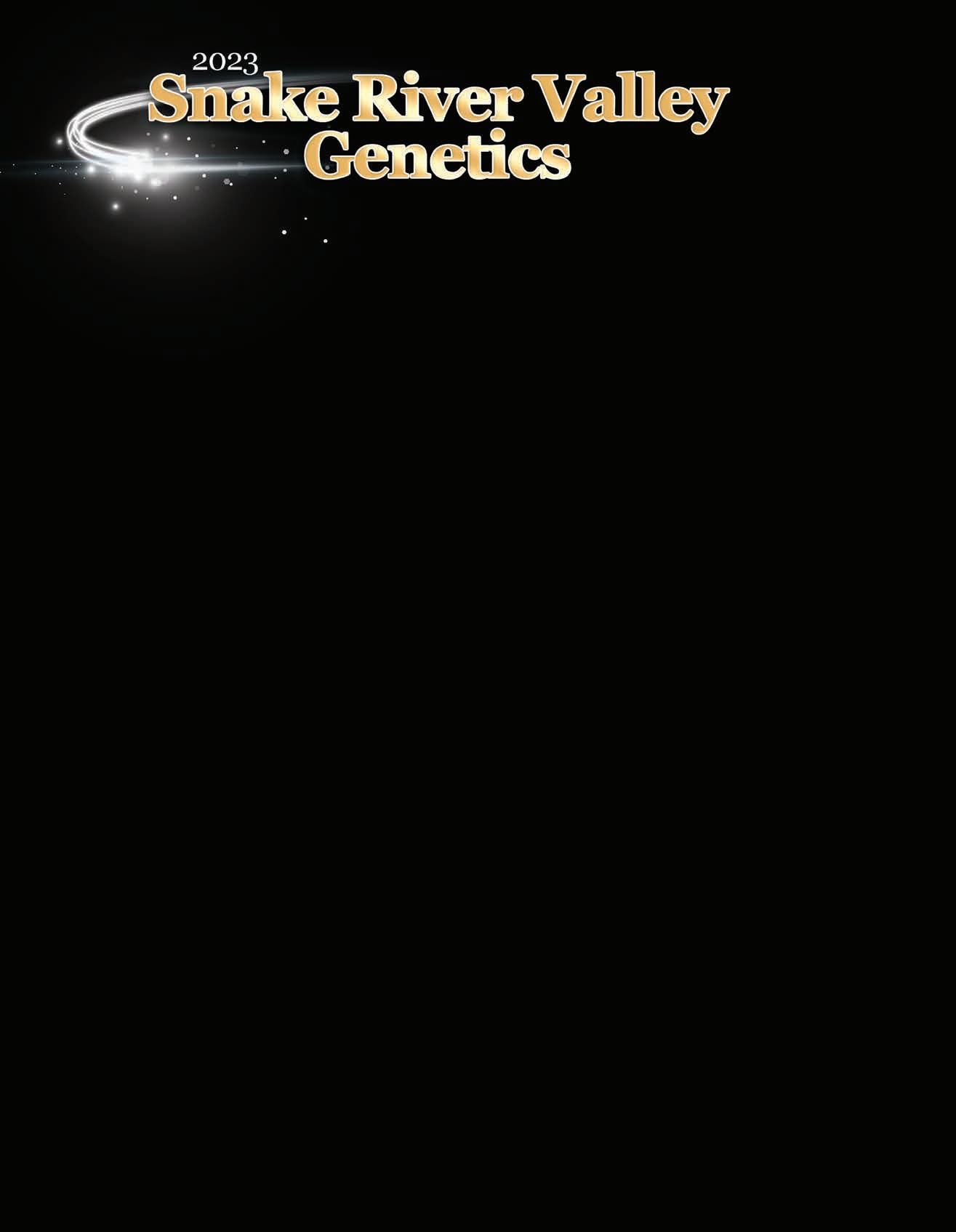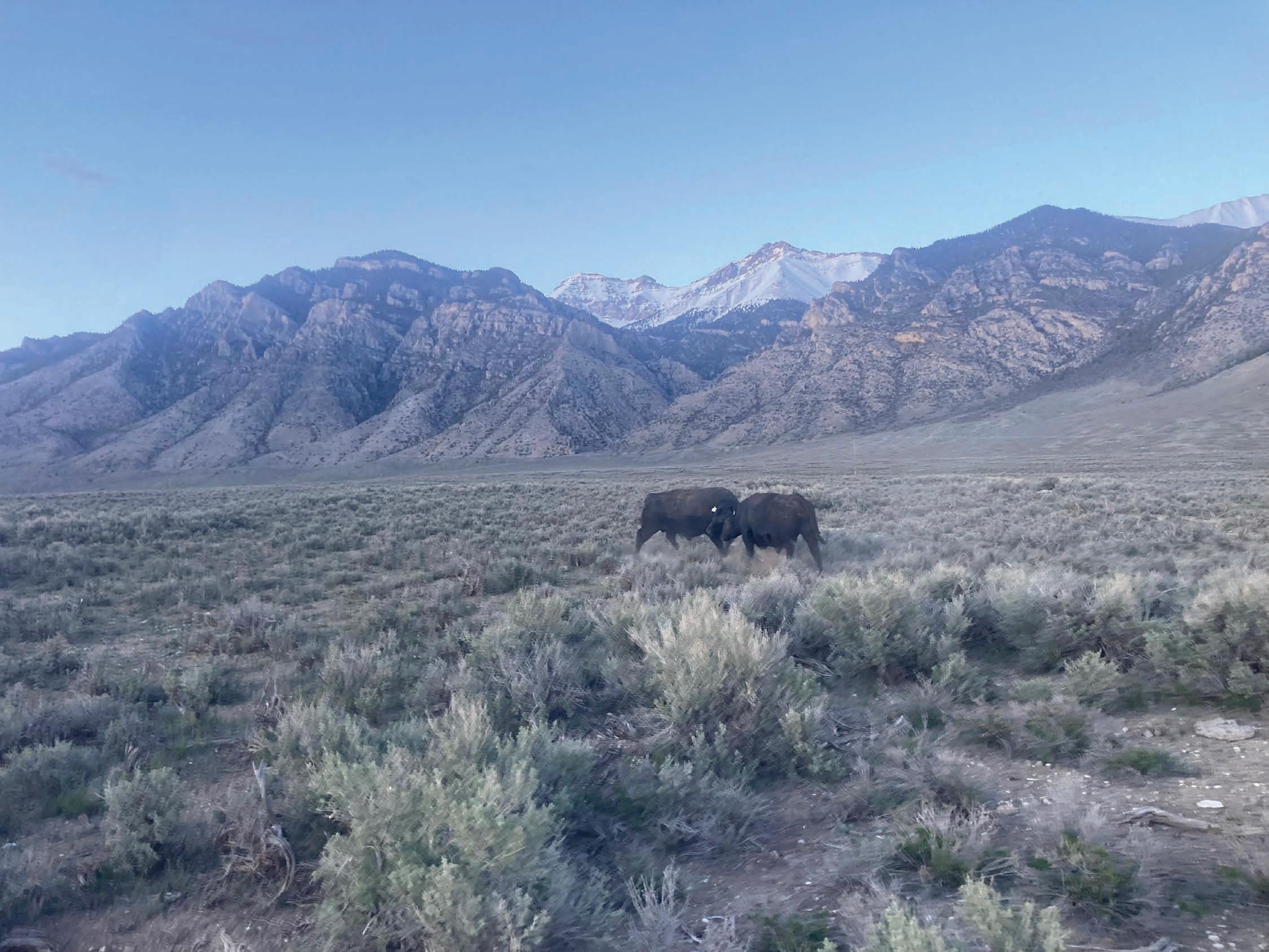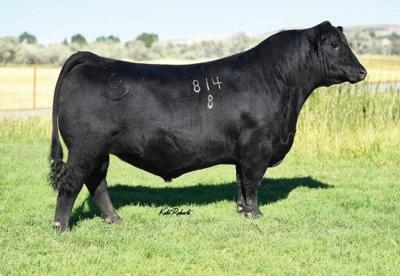














PRESIDENT
Kim Brackett (Kimberly) 208-308-1952
PRESIDENT-ELECT
Jerry Wroten (Wilder) 208-831-7339
VICE PRESIDENT
Spencer Black (Almo) 208-647-8130
PAST PRESIDENT
Mark Pratt ...........(Blackfoot) 208-681-6597
TREASURER
Cody Hendrix (Rigby) 208-360-9693
FEEDER COUNCIL CHAIR
Shawna Gill (Grandview) 208-850-9076
PUREBRED COUNCIL CHAIR
Val Carter (Pingree) 208-390-4811
COW-CALF COUNCIL CHAIR
Brayden Eliason (Holbrook) 208-705-2541
CATTLEWOMEN COUNCIL CHAIR
Maggie Malson (Parma) 208-739-2265
DISTRICT 1 REPRESENTATIVES
Eric Wittman (Lapwai) 208-790-5344
Casey Scott...............(Clarkston) 208-431-3024
DISTRICT 2 REPRESENTATIVES
Lori Ireland (Mountain Home) 208-866-0112
Royce Schwenkfelder (Cambridge) 208-550-2200
DISTRICT 3 REPRESENTATIVES
Eugene Matthews (Oakley) 208-431-3260
Jesse Human (Jerome) 208-358-1277
DISTRICT 4 REPRESENTATIVES
Ryan Steele (Idaho Falls) 208-390-5765
Chris Kirby (Salmon) 208-223-2258
DISTRICT 5 REPRESENTATIVES
Roscoe Lake (Blackfoot) 208-604-3650
Arnold Callison (Blackfoot) 208-681-8440
ALLIED INDUSTRY REPRESENTATIVE
Kody Dee Williams.....(Fruitland) 509-948-6430
DIRECTORS AT LARGE
Robert Oxarango (Emmett) 208-431-0777
Adrian Meyer (Grand View) 208-509-1892
CATTLEWOMEN BOARD REPRESENTATIVE
Tay Brackett (Filer) 208-866-4967
EXECUTIVE VICE PRESIDENT
Cameron Mulrony cameron@idahocattle.org
NATURAL RESOURCES POLICY DIRECTOR
Karen Williams karen@idahocattle.org
ADMINISTRATIVE ASSISTANT
Michelle Johnson michelle@idahocattle.org
DIR. OF MEMBERSHIP & INDUSTRY ENGAGEMENT
Morgan Lutgen morgan@idahocattle.org
Contact Idaho Cattle Association:
Mailing address: P.O. Box 15397, Boise, ID 83715
Location: 2120 Airport Way, Boise, ID 83705
Phone: 208-343-1615
For advertising sales, contact: idahocattlepublications@gmail.com
The Line Rider is the official publication of the Idaho Cattle Association. It is published 10 times each year, in January, February, March, April/May, June, July/August, September, October, November and December.








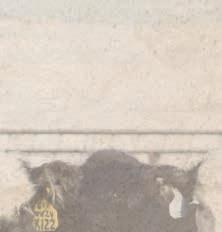







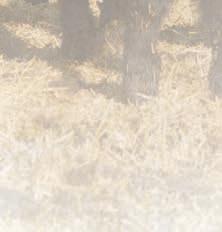





























































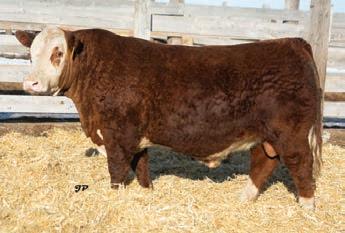
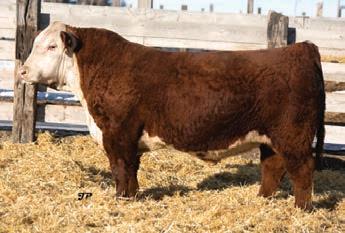


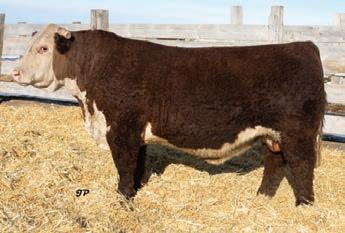
No matter in which part of our great state you reside, it’s impossible to miss all the people that have moved to Idaho in the past few years. Increased traffic on the roads, in both urban and rural areas. Swelling K-12 school populations. Crowded grocery stores. Rising demand for healthcare. Escalating numbers of recreationists on public lands.
It’s not difficult to understand what attracts folks to Idaho. We have long known what makes it special: business-friendly, lower cost of living, stunning vistas, and, of course, an excellent place to raise cattle. Whatever the draw may be for people to relocate to the Gem State, the state is quickly trying to adapt. New housing developments sprouting up around our larger cities and towns. Construction at the Boise Airport. Expanding health care sector. Flexible school schedules and new schools being built.
BY KIM BRACKETT ICA President
they have on Idaho’s ranching families shouldn’t be passed up.
We have opportunities to interact with these new Idahoans and I encourage you to give some thought to what you’d like to say. As I have reminded my husband, these interactions are a chance to build a relationship between cattle ranchers and new Idahoans; so choosing to engage with them in a positive way is the goal.
I have found that many people are unaware of the economic value that agriculture, specifically the cattle industry, provide to the state of Idaho. Mention that Idaho’s farms and ranches are the main economic driver in many of Idaho’s small towns and rural communities. Research done by the University of Idaho surrounding the ‘Financial Condition of Idaho Agriculture : 2022’ showed that 17% of Idaho’s total economic output comes from agriculture and 1 in 8 Idaho jobs is in agriculture or agribusiness. (Brett Wilder, Xiaoxue “Rita” Du & Garth Taylor for U of I Extension)
When visiting with people who enjoy recreating on public lands, discuss the impact of your ranch management decisions on those lands. Working ranches and rangelands maintain habitat for countless birds and wildlife throughout our state. Appropriately managed riparian areas support fish habitat. Transition into what they can do to help: stay on designated trails and roads, leave gates as found, respect private property.
The increased population affects Idaho’s cattle industry, as well. Many new Idahoans enjoy outdoor recreation on our public lands. They are also consumers who have decisions to make at the meat case and in restaurants. And they are voters. Occasions to visit with these folks about the value of Idaho’s cattle industry and the impact
Change is hard. It’s starting to feel a bit crowded in our wide-open western state. Idaho’s demography is shifting at an unprecedented pace. I encourage you to view this as an opportunity to build relationships with our new neighbors. Take the time to answer questions about your ranch. We need more allies to support the cattle industry and what better way to build our support base than through conversation with people who share our appreciation for living in Idaho.
…about the cattle industry in Idaho.
We have opportunities to interact with these new Idahoans and I encourage you to give some thought to what you’d like to say.












The interest rates up, and the stock markets down, you’ll only get mugged if you go downtown!
In 1982 Hank Williams Jr sang these lyrics, at that time I was but a year old. Well 40 Years later the same words sang true. The parallels of the song from then to now have some similarities to the world today, but the one thing that continues to prove true every time we see change is that a, “country boy can survive”
BY CAMERON MULRONY ICA Executive Vice President
bulls out when living in Oregon, and about 3 weeks later have the chance to turn out on stubble pasture for the remainder of the spring. The change of location and grass type would always create a gap in my calving window the following year. The challenge is the foresight to look at the stressors of today and realize the consequences at a later date.
Past ICA President Mark Pratt sent me a link to a podcast that aired on the Art of Range. It read an essay that was presented in 2005. The article was a presentation from Nathan Sayre that was converted to this essay read in the pod cast.
One of the key takeaways from this essay for me was that the sustainability of ranching is threatened more by social issues rather than ecological. Let me repeat that for the folks in the back, “the sustainability of ranching is threatened by social issues rather than ecological.”
February has arrived and as I laid out in the January issue we are seeing some changes this year in Idaho at the state house, at the national level within the halls of the chambers, across the street where the old onion patch is now a subdivision has grown in it’s place. Change is upon our state, and it is an evolution of change, not a one time adjustment, but as Hank reported in ’82. I’ll predict in ’23, a country boy will survive.
I have always tried to lean on my resources to find solutions. Solutions at times mean change, and as the evolution of our state continues, I challenge you to find solutions for not only your operations and your communities, but for our national issues as well. Change is stressful, we can see it in our cattle, we can see it in our friends and family. For example I used to turn my
Let us fast forward 17+ years!! We are looking at stressors in our industry daily, most of which are social factors. Have our ecological issues changed much in 17 years?? It’s my opinion that there have been changes to the ecological factors that relate to our industry. If you agree that climate patterns have changed, then you also have to look at the factor of time. Is the supposed climate pattern becoming inevitable, based on nature, and has the scale of time yet to be realized before we see the next shift in the pattern? Is it one that has been magnified by management of the resources of the planet? Well, that’s a conversation for another day, however the ecological changes that have faced industry are much fewer than the social perspectives that have challenged us in the same time frame.
I have asked myself since first listening to this podcast, what can I do to change the social perception of our industry, because as you know in time perception becomes reality. When in fact reality is
One of the key takeaways from this essay for me was that the sustainability of ranching is threatened more by social issues rather than ecological.
Embracing the change while digging in to make sure our industry continues to be represented.
but a figment of your imagination. However, if your perception can influence change, then your imagination can become reality. Where do we start?
We tend to fear the unknown, we push back on change, we like structure in our lives. Even us as “Cowboys” may not know exactly how the details of the day will unfold we like structure.

I have decided that the industry and our partners here in Idaho and across the nation need to continue to address the social challenges. No this is not a lightbulb moment; many have said this before and will continue to say it in the future. The thing that we need to remember is that we need to evolve with change. Embrace that the change is taking place and step out into the uncomfortable zone and help address the stressors of today that are going to affect the future, look at the tunnel and find a light to aim toward.
Idaho’s population is changing, the interest rate is up, and the stock market is down. The survey that was completed by our partners at the Idaho Rangeland Resources Commission shed some light on what we might expect to see in the demographic. Now, I am not quoting the survey, but my takeaway was that the newest Idahoan’s are uninformed on the cattle industry, and the significance within our state.
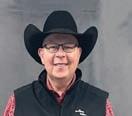

CONTINUED, PAGE 10
CHAD
CENTRAL
C: 208.891.0324

JIM RYSKA
CENTRAL TERRITORY
C: 208.890.4312

KENZIE STEVENS
EASTERN TERRITORY
C: 208.731.2117
MARK NELSON

CENTRAL TERRITORY
C: 208.985.4942
TOM PEILA

P: 800.453.5318
F: 801.377.6927

BIG SKY TERRITORY
C: 406.596.2267
However, the good news was, the longer a person lives within our state the more they tend to support our industry. The experience of seeing the best stewards of cattle and our resources from the pasture to the plate help to alleviate some of the stress that comes with the change.
We cannot fear the unknown, we need to continue to address the social perceptions on our industry, we need to continue to provide resources for those that are “undecided about our industry”. We need to do all the things that continue to shed light on the success of our industry, and it’s continued resiliency and sustainable future.
Our association Staff and Leadership continue to work to help bridge the gap from “undecided” to “support” but we need the help of every member and supporter of our industry. Get involved, the session is just getting into the heart of the legislature, call your representatives and senators in Boise if you have a concern or praise for what they are doing. Call our office, or grab an ear at the upcoming bull sales or winter beef schools. We need to continue to work on the social aspects to our industry and the policy makers are a good place to work during the session, as well as your new and old neighbors at every basketball game, or the guy behind you in line at the grocery store. Idaho’s Cattle Industry is the backbone of our state. Send the message and praise the good things that we have done as we continue to evolve with the times. “A Country Boy WILL Survive”.

As 4th generation Preston, Idaho, cattle ranchers, we are building our family legacy as we take a systematic approach with sound judgement, balanced eye-appeal, and functional cattle that will thrive in our rigid conditions.





Our cowherd is backed with performance, carcass and maternal traits so we can sell bulls that thrive in the commercial industry from conception to consumption.



We take cattle ranching back to the basics of good-footed, hearty cows producing soggy calves every year!
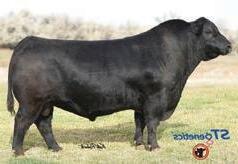








It is usually at this point of the year, just before the promise of spring appears, that the aggregation of cold, blustery, sunless days really drags a soul down. Hang in there. Shortly the sun will begin to offer greater warmth and increasing presence.
Since life began, humankind has not just thrived under the sun’s warming rays but has survived by using the sun to sustain life. While we have always relied on the sun for various life-sustaining uses, harnessing its power for conversion to electricity is relatively new to the scene.
we certainly carry our weight and put that energy to good, productive use, being a world superpower and maintaining the world’s largest economy with a 25% share in the world’s gross domestic product (GDP).
So where does all that needed energy currently come from? According to the U.S. Energy Information Administration, in 2021, about 4.11 trillion kilowatt hours (kWh) of electricity were generated at utility-scale electricity generation facilities in the United States. Of that total, about 61% of this electricity generation was from fossil fuels—coal (21.9%), natural gas (38.4%), petroleum (.5%), and other gases. About 19% was from nuclear energy, and about 20% was from renewable energy sources including wind (9.2%), hydropower (6.1%), and last but not least, the topic of the hour, solar (2.8%).
While residential solar panels have been cropping up on the rooftops of houses in local neighborhoods for the past several years, large utility-scale solar development project proposals have of yet, been limited. However, such proposals are enjoying a rise to popularity, at least by “green” energy enthusiasts and capitalistic potential developers who have taken note of the Biden administration’s push for renewable energy development.
In a society where energy requirements are high, production of that energy remains a pretty high priority. By the numbers, the United States’ share of world population was about 4% in 2021 while our share of the world’s energy consumption was 16%. I do not share this statistic as an accusation. After all,
The Biden administration has not been shy about its desire to rid the U.S. of its fossil fuel dependence. In order to do so, energy production from other sources would have to increase dramatically, as evidenced by the statistics above. Thus, the push for renewable energy development and the administration has set its sights on public lands for such development. In an Executive Order issued in 2020 entitled “Tackling the Climate Crisis at Home and Abroad, President Biden ordered the Secretary of the Interior to ‘‘review siting and permitting processes on public lands’’ with a goal of increasing ‘‘renewable energy production on those lands. That was followed up with The Energy Act of 2020 passed by Congress which directs the Secretary to ‘‘seek to issue permits that, in total, authorize production of not less than 25 gigawatts of electricity from wind, solar, and geothermal energy projects by not later than 2025,
New efforts to harness the sun’s power may have detrimental impacts to Idaho’s cattle ranching families.
The Biden administration has not been shy about its desire to rid the U.S. of its fossil fuel dependence.
In 2023, Sitz Angus is celebrating 100 years of serving cattleman with an unwavering commitment to providing Angus seedstock with an emphasis on maternal strength and producer profitability. While pursuing the American dream, Will and Freida Sitz purchased their first registered Angus cattle in 1923. Four generations of the Sitz family, enduring challenges along the way, have grown and cultivated Sitz Angus into what it is today.










through management of public lands and administration of Federal laws.’’




And more recently, Interior Secretary Haaland announced plans to follow up on this direction by ramping up efforts to support solar energy development on public lands across the West. Under her direction, The Bureau of Land Management (BLM) has developed an updated plan to guide solar energy development on public lands through an updated Solar Programmatic Environmental Impact Statement (PEIS), which will “help accelerate and continue momentum for the clean energy economy.” Among other things, the PEIS expanded priority solar development areas to include Idaho. ICA submitted comments detailing concerns about the proposal and about solar development during the public comment period which just closed on February 6.
What does this all have to do with the cattle industry in Idaho? I’m afraid we are all about to find out just how
impactful solar development can be to ranch and rangelands. Utility-scale solar energy development is not compatible with any other land use. It requires exclusive and extensive use of the land. The land under which solar developments exist is sterilized and its very large perimeter is fenced. To put a finer point on it, where solar is developed grazing is eliminated. Entirely. Siting of solar development on public lands in Idaho will take out thousands of acres at a time. There is very little BLM land in Idaho that is not currently occupied by a grazing permit. Virtually any solar development in our state on BLM lands will reduce livestock AUMs.
Aside from the very pertinent concerns about solar development’s impact on our industry, there are very real concerns about the environmental impact of solar development, frustratingly overlooked by the administration in its zeal to keep up appearances in “saving the climate”. Cows, and their owners, are under a ridiculous amount of scrutiny when it comes to analyzing their potential to impact the environment. The quantity of bureaucratic hoops that must be jumped through in order to turn livestock out on federal lands would laughable in its irrelevance to the actual impact on the land, particularly when compared to the net benefit of grazing, if not for the very real burden it puts on livestock producers. Yet bureaucratic and hypocritic blind eyes are turned to the impacts of a use such as solar which would obliterate the landscape for wildlife and any other productive use.

To provide electricity for 1,000 homes, a solar power development would require 32 acres of land which means that in order to meet the needs of U.S. energy consumption, 19 million acres of land would be required (equivalent to the entire land mass of South Carolina). That’s 19 million acres upon which no other use


would be possible. Further, it has been estimated that 1 gigawatt of power generated by solar equates to 10,000 acres of land disturbance. By comparison, 1 gigawatt of nuclear energy equated to 640 acres of land disturbance. Further, the management and disposal of hazardous materials required for solar energy infrastructure is, in itself, energy intensive. The International Renewable Energy Agency (who knew there were so many governmental organizations devoted energy—the bureaucracy remains astounding in its mass) projects that by 2050, solar energy systems could be responsible for up to 78 million metric tons of waste. The environmental footprint of so-called renewable “green” energy is massive even if it may not have the carbon footprint of other energy sources.
So, what can you do about it? Engage in upcoming public processes. Based on the sudden and rapid increase applications for of solar development on public land in Idaho, along with the push from Washington to approve such development, Idaho BLM is undertaking a process to review how the agency reviews and approves renewable energy development proposals within the state. Public meetings have been scheduled for February 22 in Idaho Falls, February 23 in Twin Falls, and February 26 in Boise to explain how the solar application process will work. We encourage federal grazing permittees to participate in this process to express concerns about implementation of any single-use activity and explain the many benefits of the facilitation of continued livestock grazing on federal lands.
Interesting days are ahead of us on this issue, for sure, and we’ve got a fight ahead of us. ICA will continue to not only be involved in any discussions related to solar development on grazing land but be firm in our approach and philosophy that grazing is the highest and best use of the landscape and any reduction in the availability of land to graze will not be tolerated.


What a wild ride we have been on this past year and hats off to you who struggled through it all. As I sit here writing this, I cannot help but think back to last year writing my previous article and how unsure everything was looking for our industry and especially here at home on the ranch. We were in a severe drought situation, calf prices were far too low, hay prices were far too high, fuel prices starting to sky rocket, and we were starting to wonder what we were going to do. Winter left us with an extremely low snow pack and it seemed there would be no relief to the drought, leaving a lot of ranchers questioning just what the next step would be.
and instructed from NCBA Sr. Executive Director of Governance & Leadership Development, Barb Wilkinson. This was a very educational experience as to what everybody’s roles are within the association as the board of directors. She shared a quote by Peter F. Drucker that says, “Management is doing things right; Leadership is doing the right thing”. My intent for writing this is twofold:
First, in order for us as a board of directors to lead this organization we need to hear from you. What is it that you as a member of the association want to see happen or where do you want it to go? As a grassroots organization, if we don’t hear the needs, concerns or feedback of the membership, then the board cannot do what these operations want. By not attending meetings and conventions or conversing with the leadership, it is unlikely that you will be heard or be up to date on what is happening. Barb also shared “You are bound by actions taken at all meetings, regardless of your attendance.”
I am here to say now that the good Lord has blessed us and our industry here in Idaho, giving us the all important rain that was needed, and to top it off, significantly higher calf prices in the past year to heal some of the wounds. This optimism doesn’t overlook that it was still scathed with some rather large wild fires, record breaking fuel prices and feed costs. Unfortunately, we know our fellow ranchers outside of Idaho, from Utah to Texas and Colorado to Oklahoma and beyond, have not been so lucky to receive rain and are still in dire drought.
At our last meeting of the ICA staff and board of directors we were given the opportunity to be taught
Second, as members we need to utilize those tools and opportunities that the ICA has given us to be the best leaders and managers on our operations. For most of us that run our own operations we are the CEO’s (Chief Everything Officer) and we have many hats to wear. This means it is up to us to both do the right thing as well as it get it done right.
At the most recent fall convention, the Idaho Beef Council hosted a BQA certification course where many took the opportunity to become certified, including myself. This is something that the ICA is a big advocate for and so should we as livestock producers. Simply by labeling our calves on the sale catalog as BQA certified can have added value to your sale. When looking in from the outside, the public can know that our animal welfare is well at the top of our list.
Owning our roles and using what’s in our toolbox for doing the right thing and getting it done right.
You are bound by actions taken at all meetings, regardless of your attendance.
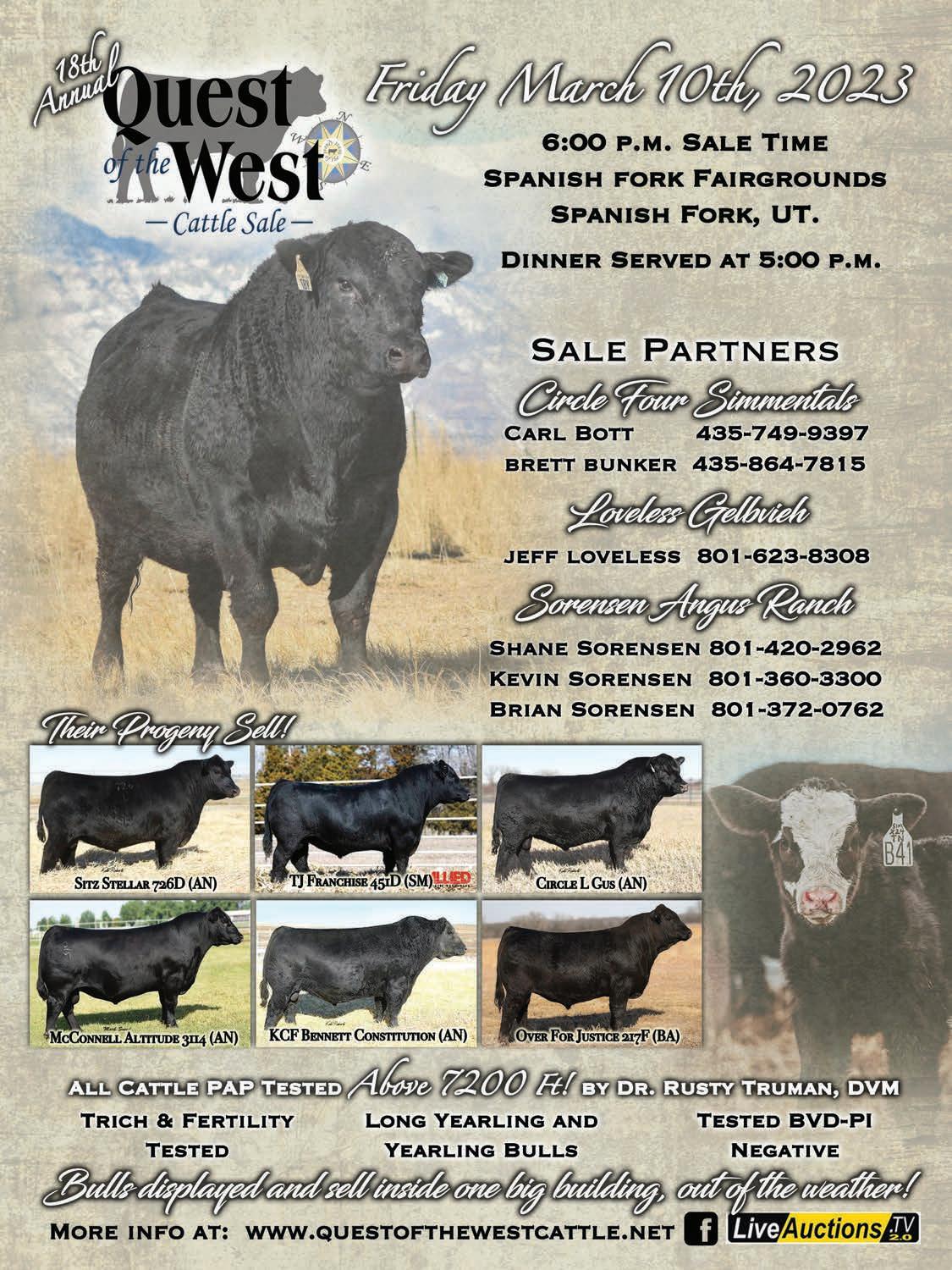
Taking opportunities to serve with the ICA is also something that will benefit not only the association, but your operation. Be willing to take an open spot on a committee or a board when it becomes available, don’t hesitate to volunteer and step up. Seeing and discussing firsthand what issues the industry is facing will help you be better prepared for when you have to deal with similar problems, know what resources are available to you and how you can more efficiently navigate the issues.
I hope that we can stay optimistic for the year to come with the moisture we need, high calf prices, and low expenses. But regardless of what comes our way this year, just know that the board of directors and office staff is here to help you be better leaders and managers. Your operations have seen many challenges and are still here despite the hiccup or two that has come, already proving your reliance. Now is the time to


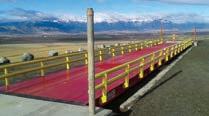
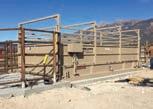





















 BY MELANIE MOSEKIAN, for the Idaho Cattle Association
BY MELANIE MOSEKIAN, for the Idaho Cattle Association
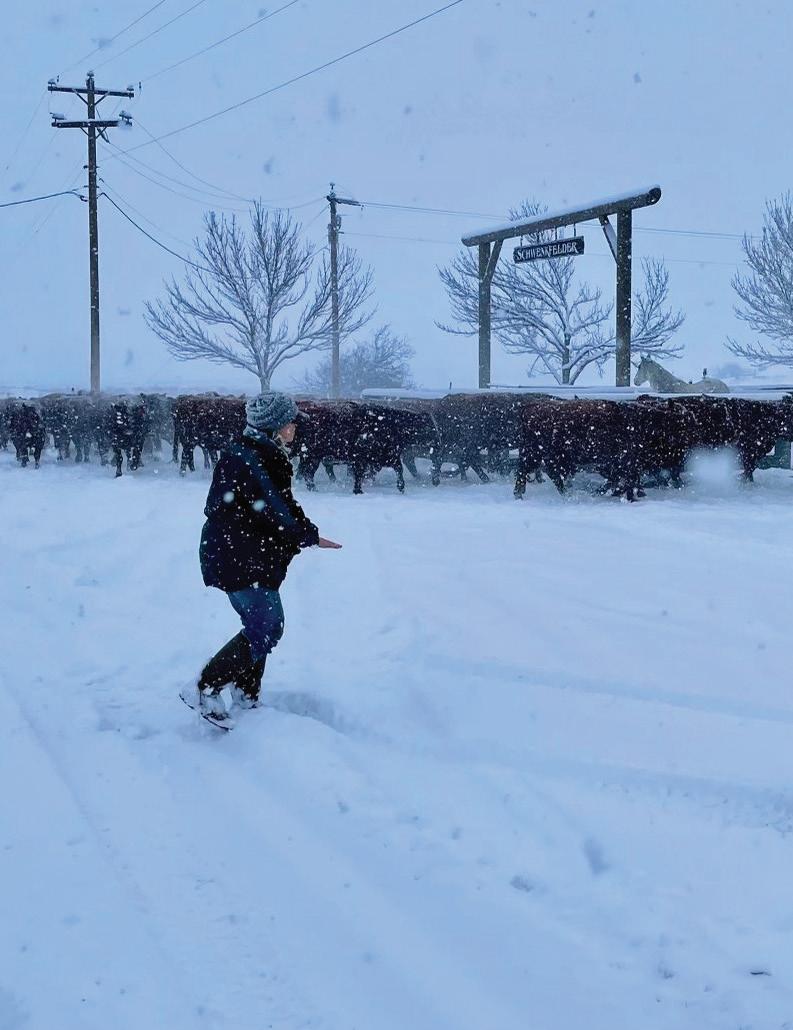
If you find yourself driving up Highway 95 coming out of Cambridge, heading toward Council, look up at the hilltops and see if you can spot a cross. Daytime is sometimes a challenge, but at night – it’s glow is truly breathtaking.


I had the chance to sit down with Royce, Pam and Mark who happen to be our neighbors across the river. And as neighbors, we treasure the opportunity to look up at the cross- and count our blessings to be able to share the belief that “GOD IS GOOD!”
 PAM SCHWENKFELDER, ALONG WITH THE HELP HER BORDER COLLIE HERDING TRAINEES MOVING PART OF THE SS CATTLE HERD ON A SNOWY DAY.
PAM SCHWENKFELDER, ALONG WITH THE HELP HER BORDER COLLIE HERDING TRAINEES MOVING PART OF THE SS CATTLE HERD ON A SNOWY DAY.
The location of this glorious landmark is the home of SS Cattle Company, a cow-calf operation & partnership between Bob and Bonnie Schwenkfelder, Royce and Pam Schwenkfelder, and Mark and Cody Moura. The Schwenkfelder family has been in the Salubria Valley since the early 1880’s. Royce & Bob’s grandfather and great-grandpa Schwenkfelder came from Switzerland in that time frame, and homesteaded for some years after the move. In 1979, Royce and Pam came back to the ranch and worked for Royce’s dad before taking ownership in the operation, along with Bob. Royce & Pam were blessed with 2 daughters (Kayla, who resides with her family in Genesee and Cody, who lives with her family in Cambridge as well) and Cody & her husband, Mark have since joined the operation. During a period of roughly 108 years, the Schwenkfelder family held federal grazing permits where they could demonstrate stewardship to the land, while providing forage for their herd. As time went on, and they were presented with various agency hurdles, SS Cattle transitioned to less permitted grazing while adding in irrigated private lands. In more recent years, the decision was made to convert to fully operating on private/lease lands in more recent years. The decision to vacate these permits was not taken likely, but Royce has demonstrated (through his 10 year tenure on the Idaho Rangeland Resources Commission board of directors, among other commitments) that he is nothing less than a staunch advocate for grazing and stewardship of the great public lands offering in Idaho. He strives to be a strong voice in this arena, and will continue to do just that as part of his role on the Board of Directors for the Idaho Cattle Association and looks for every opportunity to share his knowledge and educate others on the importance of this ecosystem.


The operation today focuses on Red Angus progeny with a Charolais cross, and while they run pairs in a cow-calf format, there is also a backgrounding element, as well as the farming of corn silage forage as well. Royce & Mark oversee the bulk of day to day operations, but they were quick to point out


that they would be at a loss if not for the valuable work done by Tyler Reynolds & Daniel Reeder. It’s not a secret among ranchers that it’s hard to keep employees, in part because it’s a 24 hour, 7 days a week job. Royce says, “We live in an area that has three or four companies who offer really good benefits, pay, time off, and sometimes, a four day work week. How do ranchers compete with that? Employees have families and need to be able to see their kid’s games and programs and such. Quality of life makes for a better team of employees and it is a balance that is difficult in the ag business, and that is one of our goals.” Royce also told me that they consider themselves blessed to have had many employees who have been able to work with SS Cattle for many years longer than one may consider average, current hands included. Mark shared that it’s Daniel & Tyler who ensure the herd is healthy & happy – and therefore profitable- and that they really are part of the SS Cattle family at the end of the day.
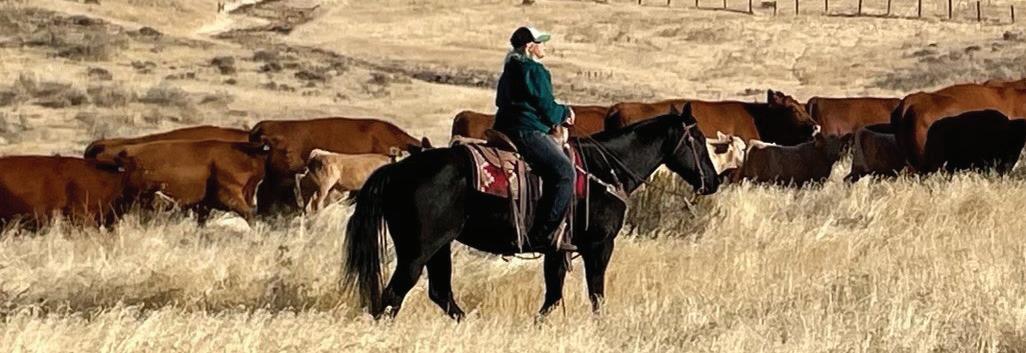
It may seem obvious, but it’s worth stating : the Schwenkfelders are grounded in their Christian faith, and they rely on this faith to keep going in the tough times and say “Thank You” in the good times. The project to put the cross on the hill was accomplished through the help of family and community members. It is not treasured by the Schwenkfelder family alone, but by all who admire it’s beauty. When I asked them to share what it means to them personally, Pam, with a tear running down her cheek, said “The cross means everything to me. If I have a really bad day, I head to the cross and I give my problems to God. Lots gets solved there”. In agreement, Royce commented, “It’s an appreciation for how blessed we are. It brings everything into perspective when you know you’re just here on this earth a little while. We didn’t do all this and we are responsible for only a short time for the stewardship of this piece of dirt.”
I asked Pam, Royce & Mark if they each have specific responsibilities, tasks, chores, jobs on the ranch. Royce replied, “It’s not assigned, but we all have certain things we all do…” Pam said, “So we don’t uhhh…..it helps our relationship” and a chuckle was shared by all around the table. Royce continued by saying, “It’s a family deal and so one of the quests is to make sure it all works”. Mark takes care of a lot of the forage production, harvesting, and sales details. Pam has tasks that she enjoys and Royce acknowledged that she’s good at them. For example, Pam keeps a watchful eye on the health of animals; going through the feedlot, looking to see if any cattle are showing signs of sickness. The guys who feed (Daniel & Tyler) are also out there on a daily basis and will give her a head’s up. Pam’s intuition with animals doesn’t stop at cattle however. She’s been successfully training Border Collies for 15 years (strictly as a hobby!) and has even had entries at Red Bluff, as well as Pendleton Cattle Barons. Pam says, “There’s more to it than just hollering at your ranch dog!” a sentiment she demonstrates as she rotates cattle through pastures in the Summer months- with the help of her trainees. Royce takes care of most of the bookkeeping tasks, cattle management, and public relations. However, at the same time they try to not be exclusive to certain jobs, because they’re finding that a little bit of cross-training is nice in case someone isn’t able to get out there all the time. They have found it to be a lesson, because if you have employees that can only do certain tasks, you limit their abilities to learn how to do things they may be a natural at.
Sitting across the table from Royce, I spy the brand on the front right breast of his shirt, which leads me to ask, “What is the meaning behind your brand?” Royce answers, “My grandpa came up with the design. It’s a double rowlock, which is
THE SCHWENKFELDER FAMILY HAVE BEEN DEMONSTRATING STEWARDSHIP FOR THE LAND AND THEIR ANIMALS FOR NEARLY 120 YEARS IN THE SALUBRIA VALLEY.the top of a hay derrick that has the pole setting on it. The rowlock is that piece of steel on top where the pole tilts. Farmers used these back in the day to put up loose hay.” I prodded for the what the meaning was behind it, but Royce just chuckled and said, “No meaning, it’s just a double rowlock”. To me, this response epitomizes the practicality of this hard working family that continues on through the generations.
What do you like best and least about ranching?
Royce: “Every day is a different day. That’s one of the things I like about ranching. Least: when you can’t change things that need to be changed. When you can’t find an answer to a problem that needs to be solved.”

Pam: “The part I like most is being out in nature on my horse. What I like least is seeing a sick animal and can’t help it because it is beyond responding to what we can do.”
Mark: “The variety and seasonality of our job. Seeing that first baby hit the ground, get up and suck is rewarding. Least: that same time of the year when it’s two o’clock in the morning during a storm and you’re trying to save a calf from the cold. However, it’s all part of the game and with the joys comes the discomforts and vice versa.”
If you could do anything else in the world what would you be doing?
Royce: “Something outside probably having to do with wildlife or the land, but I’m really where I want to be.”
Pam: “I think I would be in some kind of lawn care.” We all laughed, but she was serious. She backs up her statement by saying, “No, really. I love landscaping and that kind of stuff.”
Mark: “I’m where I want to be right now. In my short 40+ years I’ve been given the opportunity to do a lot of things and I’ve enjoyed all of it. Working outside, building with my hands; just being outside. And I get to be with my kids.” He continues saying, “I always thought I wanted to teach. I have an Ag Ed degree.” Then jokingly he added, ‘but Cody (a teacher in Cambridge) and I didn’t want to
live on two Idaho teacher salaries, so now we live on one!”
As mentioned earlier, Royce is a proponent for grazing and proper usage of public lands that Idaho has to offer, but that isn’t just a personal testament – the philosophy of being an ‘ag-vocate’ is one that is shared by all partners at SS Cattle Company. Mark told me, “We have to advocate for agriculture. Whether it be farming, ranching or hobby farming. People need to understand where their protein comes from. I think we’re always on the defense rather than the offense. You writing this article is the closest thing to an offense we have right now. We have to tell our story. The digital world is helping to get our story out. However, I think we need to get better at it as an industry.” Royce also commented, “A very small percentage of America does what we do: RANCHING. Therefore, we need to be doing a better job of educating folks about that endeavor.”
Pam also chimed in, “You need to be involved in groups that support and promote our industry. Community involvement is critical.”
With faith, family & advocacy at the core of their operation, SS Cattle Company continues to demonstrate Idaho values in support of our beef industry. If you haven’t had a chance to meet this remarkable set of individuals, I encourage you to be sure to connect if you find yourself in a common setting, or just stop by and say hello!

One of three full sibs from a tremendous flush. The only full sister was our record selling female in our fall sale at $195,000. Both of the brothers are definite herd bull prospects and will be in our 2023 Denver Pen of 3. They combine the show ring look with performance and additional pigment. 1311 seems to never miss and has produced 1.2 million in progeny sales thus far. 2135 has great EPD and Index values being in the top 10% in nine economically important traits.
These horned Belle Heir sons are right for the industry as they are great in structure and muscle mass. They are also very important for the industry as they can add so much to the carcass quality with lots of growth while still maintaining top maternal traits in the cowherd.
A heifers first calf with a WWR of 118. Another bull with an impeccable set of numbers being in the top 20% for 15 economically important traits and indexes. Extra pigment and big bodied. Sire “Barracuda” was sold to ABS.


One of three full sibs from a tremendous flush. The only full sister was our record selling female in our fall sale at $195,000. Both of the brothers are definite herd bull prospects and will be in our 2023 Denver Pen of Three. They combine the show ring look with performance and additional pigment. 1311 seems to never miss and has produced 1.2 million in progeny sales thus far. 2105 has great EPD and Index values being in the top 3% for 10 traits.
If you need to increase carcass value in your feeder calves tie to these Validated sons. They are especially strong for marbling. Extremely dark red, red to the ground with great pigment with a long level hip and wide topped.
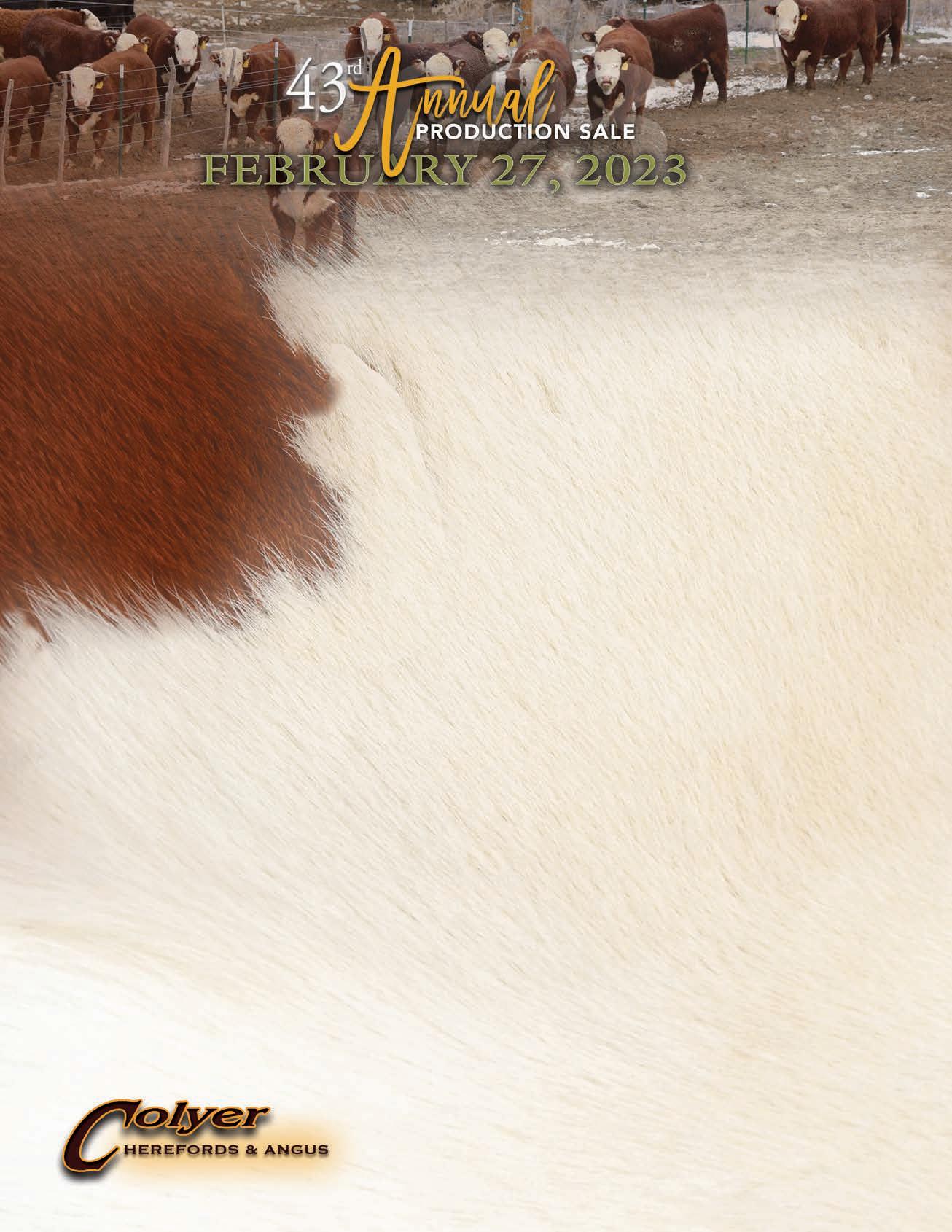
A definite pen bull for Denver 2023. He is by the ever popular Endure and the 1311 donor that is a full sister to Miles McKee and has produced over 1.2 million in progeny sales. He is a big bodied bull with extra red throughout. In the top 5% for 11 economically important EPD’s and Indexes.




Great built son of Tahoe that packs all the bells and whistles along when it comes top carcass values. His added length of body and stride is a bonus for ranchers who need a bull that can travel big country.

One of three full brothers by Real Deal and the popular D83 donor dam. They all have a super set of balanced EPD’s and have excellent pigment. Two full sisters were a highlight in our fall sale averaging $13,250. This bull was named calf champion in Reno and will be shown in Oklahoma City and Denver.


One of two flush brothers to sell out of a great Yeti donor, 8007. This son of Alternative is a phenotypic standout with figures that rank him among the elite. Maternal power and carcass combination.

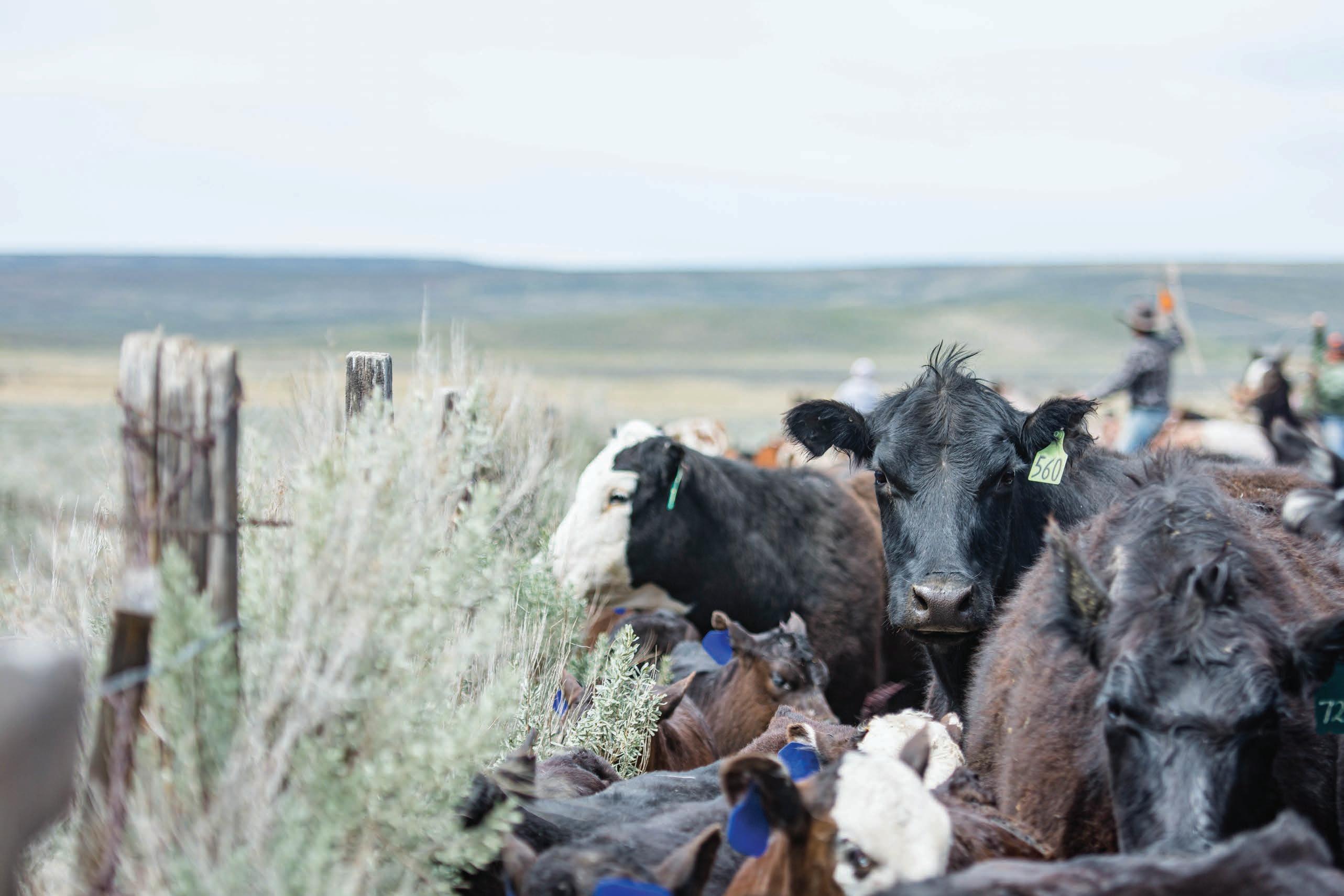






Global demand for high-quality protein is soaring and Idaho Beef Council (IBC) is working closely with the U.S. Meat Export Federation (USMEF) and regional partners to increase U.S. beef’s share of that growth.

Most of us have heard that exporting adds value to the U.S. beef industry, but do you know how it adds value to the cattle you sell? Beef exports add value first by simply increasing the volume of beef sold.
In 2021, U.S. beef and variety meat exports were record-large at 3.17 billion pounds, while export value soared to a record $10.6 billion. Global demand for U.S. beef grew even stronger in 2022, with exports through November at a record level, nearing $11 billion and expected to approach $12 billion when full-year data is available.
The U.S. exports roughly 15% of its total beef production and about 12% of beef muscle cuts. Exports are an excellent complement to our robust domestic market, especially when exporting underutilized cuts and variety meat. Exports of beef variety meat, including tongues, livers, tripe, hearts, kidneys, lips, etc., totaled $1.1 billion in 2021 and had already topped $1.15 billion through November 2022, con -
tributing significantly to the value of every animal harvested.
“Exporting adds about $452 per head for each producer here in Idaho. That is 13% year over year and more than double what it was a decade ago in 2012. We also provide a lot of protein exports and nutrition overseas and at the same time help utilize the whole carcass of that animal more fully,” explains Cevin Jones, U.S. Meat Export Federation (USMEF) Past Chair and Idaho cattle rancher.
The U.S. exports beef to more than 100 countries, and the top export destinations are South Korea, Japan, China/ Hong Kong, Mexico, Canada and Taiwan. While 2022 export growth was largely driven by the major Asian markets, demand for U.S. beef also strengthened significantly in the Caribbean, Middle East, Southeast Asia and Colombia.
CONTINUED, PAGE 36


Percent of Beef & Variety Meat Production Exported

2021 beef and variety meat exports were record large at 1.440 million mt, up 15% year-over-year, valued at $10.6 billion, up 38% from 2020 (and up $2.2 billion from the previous record in 2018)
2022 beef and variety meat exports are on a record pace at 1.361 mil mt through November, up 3% year-over-year. Value reached $10.9 billion through November, up 14% year-over-year and already surpassing the 2021 annual record

January - November 2022 value per head of fed cattle slaughtered = $452.42, up 13%
Through November, exports accounted for 13% of beef muscle cut production and 15.2% of total production when including variety meats
January - November Export Value
out of this total value per head, short plate/brisket contributed $32.66, chuck/clod/round cuts $21.94, tongues $18.63, and tripe/intestine $1.79
Beef muscle cut exports averaged 99 lbs. per fed head of cattle slaughtered through November, a new high
Beef and variety meat export value per fed head slaughtered averaged $452, also a new high
selling 160 bulls and 30 Commercial replacement females

145 Angus plus 15 SimAngus
High-Quality, Uniform, Older, Age-Advantaged Bulls in Volume

bulls are ultrasounded & ZOETIS HD50K dna-tested




Our age-advantaged bulls are available in volume! These bulls out of top sires can increase consistency and marketability in your calf crops.
As the second-largest registered Angus cowherd in Oregon calving out 600-plus females a year, you get the Advantage of only the cream-of-the-crop! The top 50% of our bulls have extremely large contemporary groups to increase predictability consistency and quality for our customers from a cowherd that has been around for nearly 40 years.


Ruthless culling for feet and legs, plus structure gives you the Advantage when it comes to bull selection. Our bulls are extremely athletic. They run in big pastures over the summer after weaning. They are developed in extremely large lots that require them to travel up and down hills over rocky, hard ground every day between a high-roughage feed source & water to ensure soundness & longevity.
Our intense A.I. program utilizes the most current and sought-after genetics in the Angus breed, with herdsires infused and utilized that rival the most popular A.I. sires in the breed for genetic value and potency.





Volume and repeat buyer discounts are available and delivery is free. Bulls are backed by a Zoetis HD50K DNA evaluation, ultrasounded with complete performance and fertility evaluation and industry best guarantee.


IBC partners with USMEF to support key U.S. beef programs in top export destinations in Asia including Japan, South Korea, and China. U.S. beef exports to these leading markets reached $6.7 billion from January-November 2022 and contributed nearly 65% of the export value per head of fed cattle slaughtered, up 13% year-over-year.
In addition to promoting Idaho Finger Steaks, a key USMEF strategy in leading markets such as Japan, South Korea, and China is to build new relationships with targeted e-commerce platforms and other convenience-driven retailers. With ideation and funding support from Idaho Beef Council in 2021 and 2022, USMEF was able to expand promotional programs for

U.S. beef in these markets with technology-driven promotions through e-commerce and mobile commerce channels and live-streaming events. Examples include:
• South Korean in-store promotion with River Valley’s Butcher shop resulted in 23% sales volume and 48% sales value increase.

• E-commerce promotion featuring Snake River Farms boneless chuck short rib, chuck flap tail, top blade, inside skirt and chuck eye roll yielded 106% sales volume and 132% sales value increases.
In addition to direct funding support, Idaho Beef Council also partners with USMEF, Oregon Beef Council and Washington State Beef Commission through the Pacific Northwest Initiative to support promotional programs in Japan such as trade seminars, branded beef showcases at in-market tradeshows and seasonal foodservice campaigns. One campaign – Try American Beef! – included over 500 participating outlets including highend steakhouses, independent sandwich and burger shops, and nationwide steak chains. Following the promotion, one participating restaurant with over 90 outlets across Japan switched from using Canadian top blade muscle to 100% U.S. beef on their menus!
Idaho Beef Council and USMEF will again join forces in 2023 on image-building campaigns and promotions intended to elevate U.S. beef above competitor product in Japan, South Korea, and China. Idaho Beef Council support is leveraged with funds from the USDA’s Market Access Program, the Beef Checkoff Program and feed grains checkoff programs to provide maximum reach and return on investment.
With over 95% of the world’s population residing outside of the United States, we will increasingly find opportunity to expand U.S. beef sales in the global marketplace.
As the checkoff continues work to increase consumer demand in the United States, the export market also represents a significant growth opportunity. This makes it crucial to carry out international marketing to ensure U.S. beef will increasingly find a place of honor on dinner tables around the globe – and continue to maximize the value of U.S. beef.
About USMEF: The U.S. Meat Export Federation (USMEF) is a nonprofit trade association working to create new opportunities and develop existing international markets for U.S. beef, pork, lamb and veal. Headquartered in Denver, USMEF has offices in Seoul, Tokyo, Beijing, Hong Kong, Shanghai, Singapore, Taipei, Moscow, St. Petersburg, Mexico City, Monterrey and Brussels. USMEF also has special market representatives covering China, the Middle East, Central and South America and the Caribbean.
Through its worldwide network of offices, USMEF has forged a series of partnerships which have enabled U.S. companies and U.S. products to become integral parts of international red meat markets. An extensive international presence enables USMEF to have a finger on the pulse of vital markets around the world.
Gallagher helps make each generation better than the last. Genetics are essential to the performance of your animals from year to year. The right information makes all the difference when important decisions need to be made. Gallagher’s Animal Performance App, Weigh Scales, EID Tag Readers, Loadbars, and Electric Fencing products give you the best tools and information to help your animals thrive. Because at Gallagher, we know the best is yet to come.
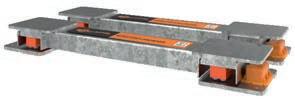















 H5 215Z DOMINO 011 Ultra-Complete, Multi-Trait Sire, with Breed-Leading .60 Marbling EPD
H5 215Z DOMINO 011 Ultra-Complete, Multi-Trait Sire, with Breed-Leading .60 Marbling EPD



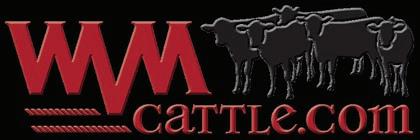




Winter and early spring calving in Idaho results in many challenges. Although not the ideal time to calve based on weather and forage, it is often the most appropriate time for many cow-calf operations. Whether your outfit is a seedstock operation trying to create older yearling bulls for market or a commercial operation wanting calves to be old enough to go to public lands in May, cold weather calving might be the option.
Guarding against hypothermia in calves starts before birth. Cows in the last trimester of pregnancy need sufficient protein and energy to ensure calves have enough fat reserves and energy. Cows require at diet that is 7 to 8 % crude protein and 54% total digestible nutrients (TDN). The only way to know for sure is to test the hay being fed for nutrient content. Cows on winter range will need protein supplementation. A cow’s diet can have a huge effect on calf vigor and ability to resist cold. Calves from cows that calve in body condition score 5 or 6 get up faster and nurse sooner that calves from thin cows (Table 1). Calves that nurse more quickly are less susceptible to hypothermia.
Getting and keeping calves as dry as possible will prevent hypothermia. The combination of a good mother licking off the coat and the calves own body heat result in a dry coat under favorable conditions. Making sure calves are well cleaned off can prevent frostbite to ears, feet and tails. Often calves born to heifers need extra drying as these young moms often miss critical spots.
However, winter calving can result in chilled calves. Severely cold temperatures, high wind speeds (wind chill) and/or snow, sleet or rain will increase the incidence of hypothermic calves. Knowing the signs of hypothermia are critical to proper treatment and care (Table 2).
Newborn calves are the most susceptible to hypothermia as they are emerging wet into a cold environment. However, calves up to 48 hours old are not able to regulate their body temperature well. Therefore, a severe temperature drop, or high amounts of moisture can be dangerous to calves 1 to 2 days old.

Cold stress prevention after calving is more obvious. Bedding to break contact with the cold ground, erecting windbreaks and judicious use of calving barns are good options. Calf shelters can help, but they can also become a pathogen pit resulting in calf scours. Calf blankets are often used in dairy operations and some Canadian operations.
The key to treating hypothermia is to get calves into a warm environment and dry. Many methods are effective in warming calves. By the floorboard heater in the truck, by the wood stove in the house, calf warming boxes and warm water
baths are all good methods of warming chilled calves. Ideally, the warming temperature should be 103° to 105° F (108°F is an absolute maximum). Remember normal body temperature for a calf is 101.5° F.

A critical component of warming chilled calves is to get warm colostrum into them. One to two quarts of colostrum administered by esophageal (tube) feeder at the start of the warming period will work wonders. Using either colostrum from the herd or bagged colostrum that contains a minimum of 100g of IgG will work. The temperature of the colostrum should be 101° F to 103° F. The warm colostrum will raise the core temperature of the calf while providing a source of energy for shivering and body heat production.
Excessively rapid warming can result in shock or tissue damage. In mammals, the survival mechanism for hypothermia is to shunt blood flow to the major organs – heart, brain, lungs and liver. If calves, especially severely hypothermic ones, are warmed too quickly blood is shunted away from organs to the skin and extremities resulting in shock. This is another reason that warming the core with colostrum is key to success.
A warm water bath is the best way to warm severely hypothermic calves. An experiment conducted in Canada examined four different methods of warming severely hypothermic calves
(body temperature of 86° F or less). Methods included warm water bath (101° F), warm water bath + brandy administered to the calf, a calf blanket, or heat lamps (see Figure 1). They found that after 60 minutes in the warm water bath (with or without brandy) calves were nearing normal temperature and had reached normal temperatures by 80 minutes. In contrast, it took almost 2.5 hours for the other methods to get calves to near normal temperatures. So, the conclusions were: 1) warm water bath was the best way to warm severely hypothermic calves, and 2) brandy did more good in the rancher than in the calf.
When using a warm water bath, it is important not to exceed 103° F. Bath temperature needs to be monitored frequently and kept at the proper temperature. It is also critical that once calves are removed from the bath that they dry off rapidly in a warm area, such as a bathroom, with the heat up to 90+° F or a calf warming box. Calves also need to be constantly monitored while in the bath, so they do not inhale any water.
Mild to moderately hypothermic calves can be warmed by any of the previously mentioned methods. At the Nancy M. Cumming Center our preferred method of warming calves is a home-made calf warming box (See photos). The critical elements are a milk house heater with thermostat, a raised perforated plastic floor, a thermometer and ventilation holes. The milk house heater is attached to the box in a separate compartment, so it can be accessed without bothering the calf and the calf won’t get too close to it. The warm air enters the box below the floor allowing the warm air to rise over the calf. The thermometer monitors temperature to ensure the box doesn’t get too cold or too hot. Adjustable ventilation holes let moisture escape from the box as the calf dries. The box is big enough for two calves, but it is snug with two. Before placing calves in the box, we tube feed them and towel dry them.
Heat lamps can be effective. However,
they tend to overheat the calf on one side while the other side is cold. In addition, the temperature is hard to regulate.

At the Nancy M. Cummings Center, most of our calving occurs outdoors in bedded calving pastures. Stressed calves, calves that need help, and cows with calving difficulty come into the calving or maternity barn. On extremely cold nights, cows showing early signs of labor are brought into the calving barn.
Using prevention methods can reduce hypothermia in calves. However, at some point in time, there will be some cold stressed calves. Saving a chilled calf is always rewarding.

Here’s hoping all your cows calve unassisted, all the calves bounce right up and nurse, and all the 1st calf heifers figure out how to be good mothers.
PROGENY SELL!
20TH ANNUAL BULL SALE



FEBRUARY 25, 2023
JR Ranch Sale Barn • Othello, Washington

SELLING:
To learn more, visit the sale website: www.RanchersChoiceSale.com

HANG’N A CATTLE COMPANY
Alan & Leslie Alexander • Pasco, WA
Alan’s Cell: 509-727-9151 • hangna@owt.com www.hangnacattle.com

UNIVERSITY OF IDAHO
Kayleen Oliver, Beef Manager • Moscow, ID Kayleen’s Cell: 509-998-3886 koliver@uidaho.edu

Ferry, ID
Pat’s Cell: 208-290-4522 • pgardiner@aol.com

Glenn Ensz, Herdsman: 208-597-0617

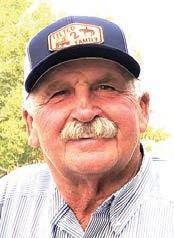
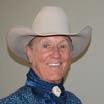
SHB ANGUS
Ed Gross, Manager • Reardan, WA

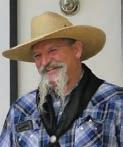
Ed’s Cell: 509-979-9233 shbangus@gmail.com




Reminisce Cows- Cow herd performance starts with measuring structural soundness and disposition. If these 2 traits aren’t in order, it doesn’t matter how fertile she is or how big of calf she can raise.

Reminisce Bulls- Born and raised in altitudes above 7,000.’ Developed on a 41 mega cal ration; Summered in big sage brush pastures to learn to travel in big country.
How Good are Your Cattle?


Bragging rights on performance begin and end on the rail. On that day you will know how healthy they were, how well they gained, how well they converted, and how well they will taste to a consumer that doesn’t know you. We all sell our cattle by the pound and on that day you will be paid accordingly. Do you know how good your cattle are? Reminisce Angus customers do. They have the data. They have the bragging rights.
Hoover Dam 30 Sons Sell!
VAR 30 Sons Sell! AAA# 16124994 DOB: 01/25/2008 CED BW WW YW M MB RE +7 -.3 +46 +88 +25 +.79 +.77
BRYAN & MARCIA MUSSARD www.remangus.com 6101 Sweetwater Rd. Dillon, MT • 406-925-1416 • 406-683-6363 • bryanmussard406@gmail.com 165 Head Sell Including 35 Embryo Bulls AAA# 17264774 DOB: 01/30/2012 CED BW WW YW M MB RE +10 -1.9 +49 +90 +25 +.63 +.70 Musgrave Aviator 50 Sons Sell!

Silver Bit Bulls sire calves that gain, convert, & grade at the top end of thousands of calves in feedlots they’ve gone to. Silver Bit sired calves have consistently been the top selling calves on the summer Superior Livestock Video Sales.





Silver Bit Bulls come from one of the strongest herds of Angus cows anywhere. Wide based, easy fleshing, good footed, good milking, with tight udders & small teats. Lots of generations of breeding like kind to like kind for a consistent maternal package.
Silver Bit Ranch AI’s to only the Best Proven Sires!
Low to Moderate birth weights for consistent, easy calving!
PAP Tested ~ Semen Tested ~ Ultrasound Carcass Tested ~ BVD PI Free Tested
Embryo Program based on the best proven Angus genetics! Including SAV Blackcap May 5833, direct daughter of the great SAV Blackcap May 4136. SAV Madame Pride 5807,direct daughter of SAV Madame Pride 0075 who is the dam SAV America 8018, the all time record setting high selling bull.

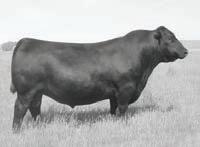


“They are deep and thick and hold up well in these big, steep, rough mountains. We raise all of our own replacement heifers and the females are great. There’s calving ease and yet they produce a calf that puts more pounds over the scale in the fall. ” ….Wayne Baker, East Fork Ranches LLC, Clayton, ID
“We have bought bulls from Silver Bit since the beginning and have continually used them for the past 25+ years because they p erform. Calves are vigorous when they are born, gain and grade well. Cows are good mothers with high fertility and breed back without extra car e. Bulls stay sound and healthy and can cover our rugged country. They Work. ” ...Joe Caywood, Tendoy, ID

“I have been buying Silver Bit bulls for over 30 years and have always been happy with how they put pounds on calves, produce mother cows with good bags and mothering ability, hold up on our range that is over 6000 ’ altitude. Scott and Gwen are always great to deal with and always stand behind the bulls they sell. ” Herb Whitworth, Elkhorn Ranch, Mackay, ID
Scott & Gwen Whitworth 208 940 0433 or silverbit_ranch@yahoo.com www.silverbitranch.net
MIDVALE, IDAHO | $7,300,000 | 5,813± acres

• 5,813± Deeded Acres
• 50,000± acres of Forest Service, Bureau of Land Management (BLM), and State grazing leases

• Considered some best, high quality grazing in South west Idaho

• Three live creeks run through the ranch
• Thirteen developed springs and four ponds and/or reservoirs
• Fenced and cross fenced
• Historically the ranch has grazed approximately 750 pair from April through early December


• Wildlife consists of elk, mule deer, turkey, bear, and upland game birds

• Borders the Payette National Forest, BLM, and Idaho State Land
• Gravel pit on the deeded ground
• 115 miles north of Boise, Idaho
• Council, Idaho 18 miles to the north
DIXIE BARRY
Farm & Ranch Sales 208.606.6494

dbarry@fayranches.com


Originally published Feb 2022
Wendy Pratt is a rancher, conservationist and member of the Idaho Cattle Association. Wendy believes in cows, grass and the power of people as individuals to create our own life experience. She authors a blog, The Pastoral Muse, from which the following contribution has been re-printed. Be sure to follow Wendy at www.thepastoralmuse.blogspot.com as she shares her unique view & stories from life on the ranch in Blackfoot, Idaho!
Calving is in full swing and it’s been piercingly cold. So cold we want to leave the bulls out a little longer this next breeding season to bypass the worst of the weather next year.
I heard my first red-wing blackbird on the 18th. We were walking the cows home and as the herd crossed the handbuilt bridge across the slough, I heard the welcome call. Next to the bridge is an elm tree that Gary had protected as a seedling by putting an upright concrete culvert around it. The culvert is broken now so the tree is free to grow big and strong. Good thing, for that bird needed a perch. It’s always a happy affair to hear the first red-wing every spring.
We spotted six bald eagles hanging around the calving grounds. They perch in the tall willows or cottonwoods and
watch for the “after birth,” the placenta, which is dropped soon after the calf is born. As long as they stay away from the baby calves, we’re good with contributing to the eagles’ health as the placenta is rich in nutrients. Cows will eat the after birth as well, but some don’t, hence the raptor presence. Once spring arrives, and the return of other foodstuffs, the eagles dissipate.
Not very many of the eagles actually have the distinctive white head. We read that it takes 4-5 years before the adult birds acquire the white headed plumage; the juveniles have dark heads and splotchy breasts. Their highpitched chipping call, not at all what you would expect from this mighty bird, carries readily across the pasture.
I’ve been tending the old calving barn every morning. It’s the best job on the ranch this time of year. It’s quiet. You get to put your hands on calves. It’s slightly warmer than outside. And you can slip in and out of the “warm room,” or the “technology lab” as the sign on the door says, to get warm. I help babies suck that need a hand, prepare a bottle for the orphan, carry hay to a cow or two that stay for longer than a few hours, but mostly I clean up after them when they leave. The barn is old-timey, nothing modern about it at all, but it’s functional.
And when the sun comes through the wall slats in the morning, and steam from the cows’ breath is illuminated in the bars of sunshine, it’s nigh on artsy.

Stress Support
Rob & Lori Thomas | 42734
The brand that covers the nation Request your sale book and view our upcoming sales at www.thomasangusranch.com




Trace Mineral: Selenium Benefits
•Respiratory health
•Immunity functions
•Musculoskeletal structure
•Cardiac health
Microbial Digestion Support Rumen health enhancing ingredients promote fiber digestion so cattle can perform better on low-quality forages.


Trace Mineral: Copper Benefits

•Supports reproductive wellness
•Boosts fertility rates by promoting consistent cycling
Crude Protein
•Muscle & bone growth
•Maintains weight
•Critical for gestation
•Supports lactaction health
Forage Boost
Give your forage a boost with supplements designed to replace deficient minerals, vitamins and protein content.
Thursday, Feb. 23, 2023 • 1 p.m. (PST)
Double M Ranch Sale Facility • 30256 Stanfield Meadows Rd., Stanfield, Ore. (Across the freeway from Top Cut Feedlot)
OFFERING
60 lots of Horned and Polled bulls
Pens of 3 commercial replacement heifers
Auctioneer: C.D. “Butch” Booker
Alder Livestock LLC
Joseph Barry
Bird Herefords
Heitshusen Cattle Co.
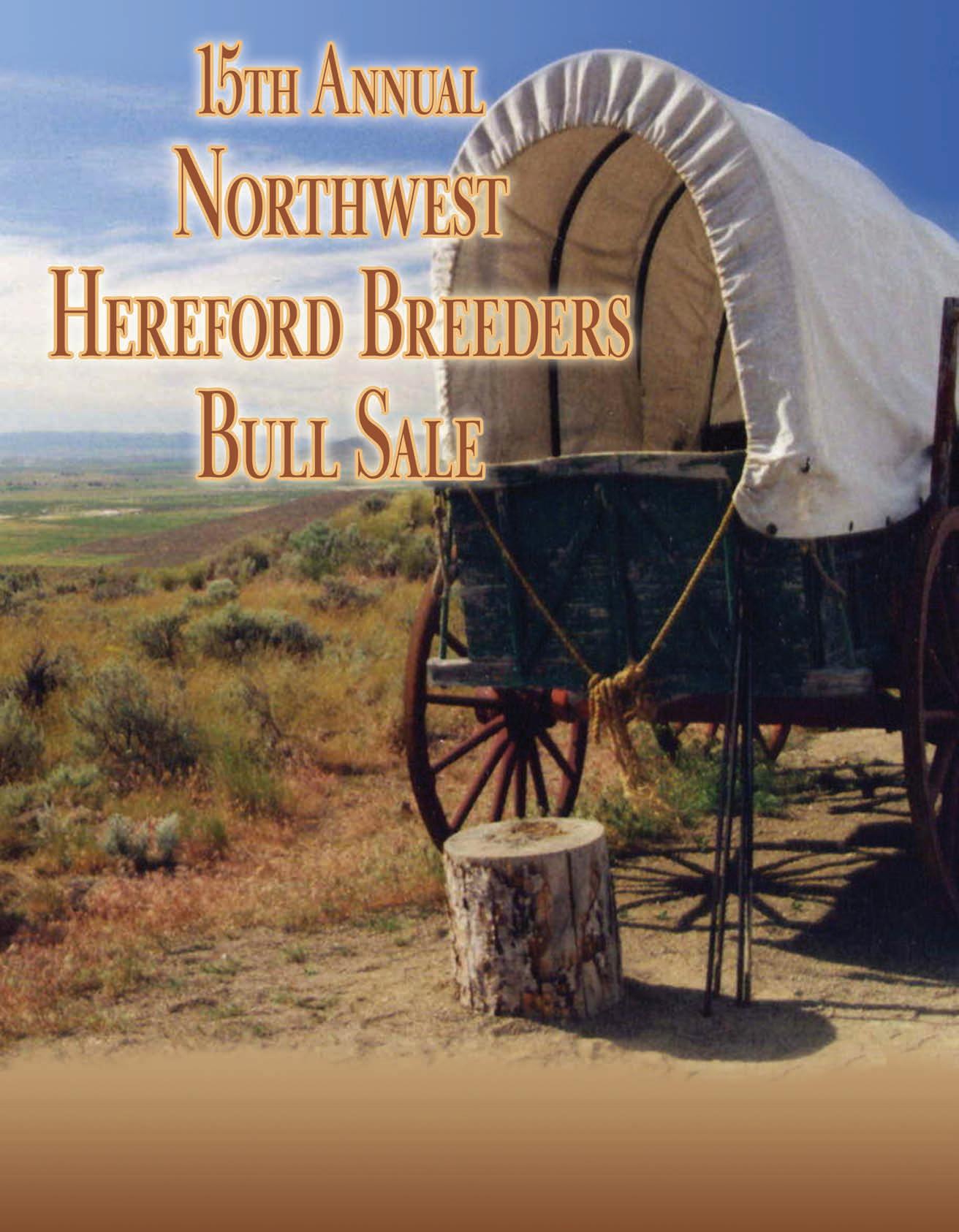
Johnson Polled Herefords
JRD Cattle Co. LLC
Limestone Blue LLC
CONSIGNORS
MCA Herefords
Stephenson Herefords
Sullivan Herefords
Cheryl Thomas
Western Skies Herefords
Wilcox & Family Cattle Co.
Watch and Bid Online
For catalogs or more information, contact:
Matt Macfarlane
916-803-3113
m3cattlemarketing@gmail.com
www.owniherefordassn.org

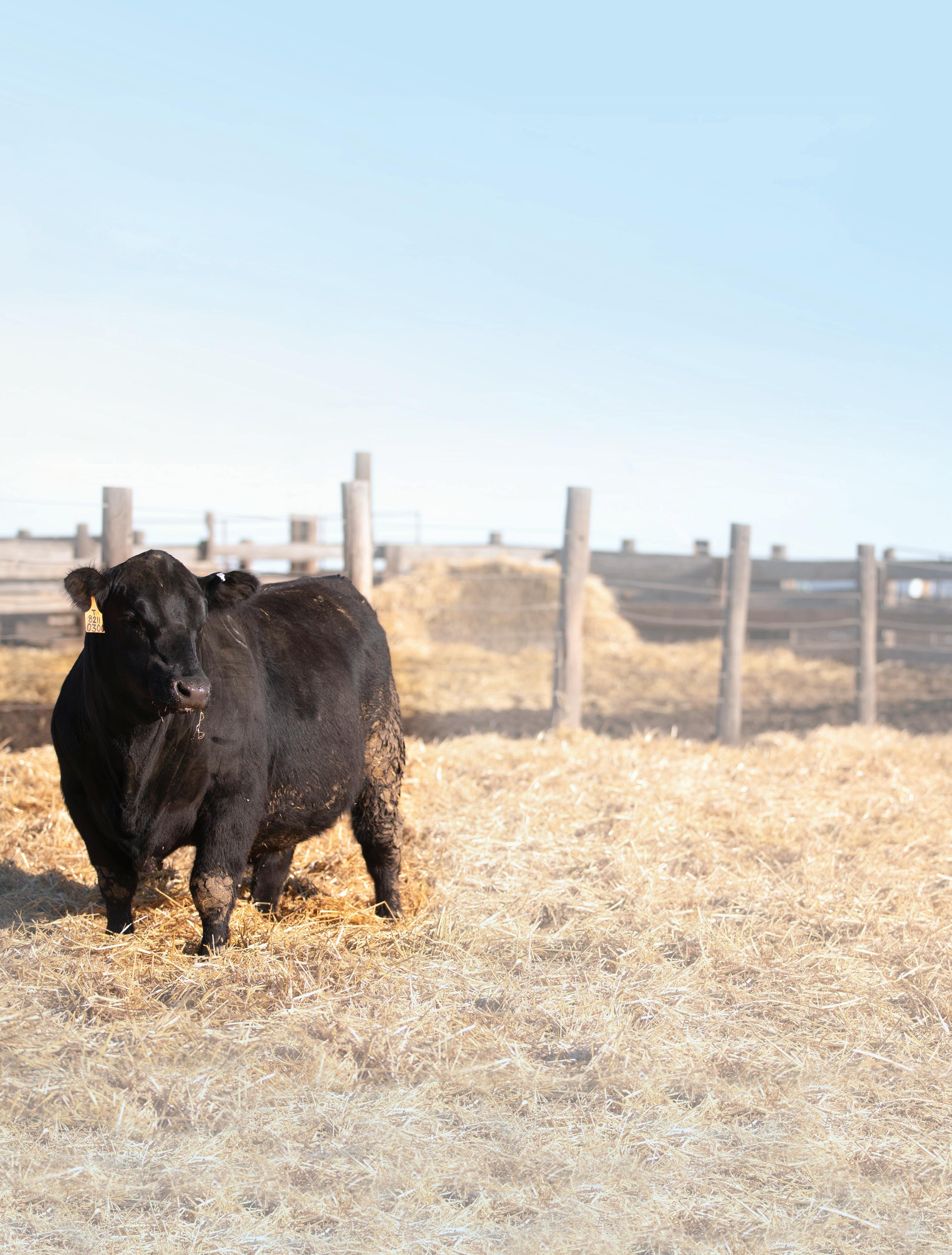





January 10, 2023

Tuesday January 10, 2023
Boise, Idaho – Governor Brad Little announced today his appointment of Chanel Tewalt as the new director of the Idaho State Department of Agriculture (ISDA).
Idaho – Governor Brad Little announced today his appointment of Chanel as the new director of the Idaho State Department of Agriculture (ISDA). replaces Celia Gould, who is retiring after 16 years of dedicated service to State of Idaho as ISDA director.
Tewalt replaces Celia Gould, who is retiring after 16 years of dedicated service to the State of Idaho as ISDA director.
a Twin Fall native, is a third - generation owner and operator of a cattle Buhl. Before becoming the first female director of ISDA, Gould served in Idaho House of Representatives for 16 years, from 1986 to 2002. Gould's leadership of the ISDA is highlighted through her organization of several international trade missions, steering the department and agriculture industry the recession, and increasing Idaho's agricultural exports from $1.2 in 2007 to nearly $2.7 billion in 2021.
Gould, a Twin Fall native, is a third - generation owner and operator of a cattle ranch in Buhl. Before becoming the first female director of ISDA, Gould served in the Idaho House of Representatives for 16 years, from 1986 to 2002. Gould's leadership of the ISDA is highlighted through her organization of several international trade missions, steering the department and agriculture industry through the recession, and increasing Idaho's agricultural exports from $1.2 billion in 2007 to nearly $2.7 billion in 2021.
these 16 years, I am honored to have worked alongside incredible staff, two governors , and an industry second to none," Gould said. "It has been a joy on the significant events and quiet efforts that assisted and highlighted agriculture. I am now blessed to return to the ranch with my family."
are few people who unders tand every aspect of the Idaho agriculture like Celia Gould. It takes a special person to accomplish what she has as director. I have greatly appreciated Celia's wisdom, work ethic, integrity, and friendship throughout her service to the State of Idaho," Governor Little said.
"Over these 16 years, I am honored to have worked alongside incredible staff, two great governors , and an industry second to none," Gould said. "It has been a joy to work on the significant events and quiet efforts that assisted and highlighted Idaho agriculture. I am now blessed to return to the ranch with my family."
"There are few people who unders tand every aspect of the Idaho agriculture industry like Celia Gould. It takes a special person to accomplish what she has as director. I have greatly appreciated Celia's wisdom, work ethic, integrity, and friendship throughout her service to the State of Idaho," Governor Little said.
"While she will be greatly missed, her retirement is well deserved. I trust the agency will be in excellent hands under Chanel Tewalt's leadership."
Tewalt has served as deputy director for the ISDA since 2021. Initially joini ng the agency as a college intern, Tewalt has gained over 15 years of experience working at ISDA, including as the agency's chief operations officer.
"It is a privilege to be considered for this role. Agriculture has shaped my life in countless ways," Tewa lt said. "I have a deep admiration for the industry and for the hard - working people who make it possible. I also understand how important it is for I SDA's work to b e implemented w ith t ransparency, c onsistency, a nd balance."

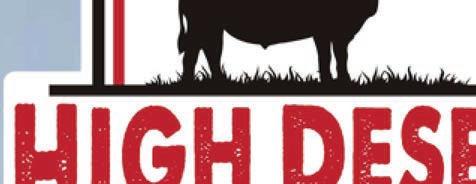



As many of the programs authorized in the 2018 Farm Bill expire this year, it is time to write a new Farm Bill. Throughout my time in Congress, I have greatly valued opportunities to work for Idahoans to help shape past Farm Bills to ensure federal farm policy best empowers Idaho production. I am looking to Idaho agriculture to once again share your input on what federal farm policies are working and what policies need finetuning in the upcoming Farm Bill discussions.
Agriculture production is central in Idaho, where farmers and ranchers put food on our tables, support local jobs and meet an ever-increasing demand for food. Idaho’s 25,000 farms and ranches maintain Idaho’s ranking in the top ten in the nation in 30 agricultural commodities, according to the Idaho State Department of Agriculture (ISDA) statistics. Further, the ISDA reports, agriculture and food processing generate 17 percent of Idaho’s total economic output in sales, accounting for nearly $20 billion in agriculture cash recipes and processed food and beverage sales in 2020.
As food demands increase with rising world populations, we continue to ask farmers and ranchers to essentially produce more with less. They are asked to meet these demands while pressure on land and water use, input costs, inflation impacts, the farm labor crisis, regulatory changes and other requirements are also escalating. The Farm Bill provides important tools producers in Idaho and across the nation need as they continue to face a challenging farm economy while ensuring the continuation of important research, promotion and conservation programs.
I have often noted that the Farm Bill contains a wide swath of federal policy far beyond what is considered traditional agricultural commodity programs. The Farm Bill includes federal nutrition,
BY MIKE CRAPO U,S, Senator
conservation, rural development, energy, world market access, forestry, specialty crops, organics and many other programs. For example:
• Commodity programs provide a safety net for U.S. agriculture producers, enabling them to remain competitive in an expanding global market as they continue to feed the world’s hungry. The next Farm Bill must continue to make wise use of taxpayer dollars while providing an appropriate safety net and risk management tools to enable Idaho farmers and ranchers to weather difficult times.
• Conservation programs’ incentives, rather than mandates, are the best way to achieve environmental results on private land and contribute more to enhancing our environment than any other policy. I have been proud to help shape these programs, which enable landowners to meet environmental goals that benefit everyone.
• Forestry and Energy programs advance energy independence while assisting with the protection, conservation, restoration and renewable energy development on forest lands. As agriculture contributes to renewable energy production, it also plays a key part in effective public lands, grazing, wildlife, wildfire mitigation and suppression policies.
• Trade programs that provide market assistance to reach consumers around the world are also of significant interest, as ISDA reports more than $2.3 billion of Idaho’s produce, grains, meats, dairy and seeds are sold worldwide. We have opportunities to further knock down barriers to accessing more world markets for Idaho products, such as building on Japan’s easing of restrictions on imports of American beef.
• Private agricultural markets, such as beef processing, marketing and competition, are also often subjects of Farm Bill discussions. Through-
out, I will continue to work with Idaho cattle producers and stand against policies that would allow government intervention into private markets that may cause adverse and unintended consequences.




Additionally, while the Farm Bill is not intended to address the agriculture labor shortage, the need to address the shortage as soon as possible in separate legislation remains critical. A solution can be reached if we focus on achieving an outcome intended to meet the long-term needs of the agricultural industry.



These are a few highlights of the many sections and likely discussions about this important, comprehensive law. I will continue to work for Idaho producers and others as Farm Bill reauthorization discussions take shape. I encourage those interested in these issues to contact me with your views as Congress begins the process of writing the next Farm Bill.
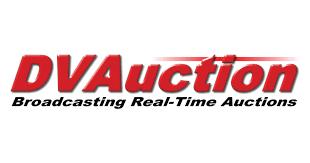
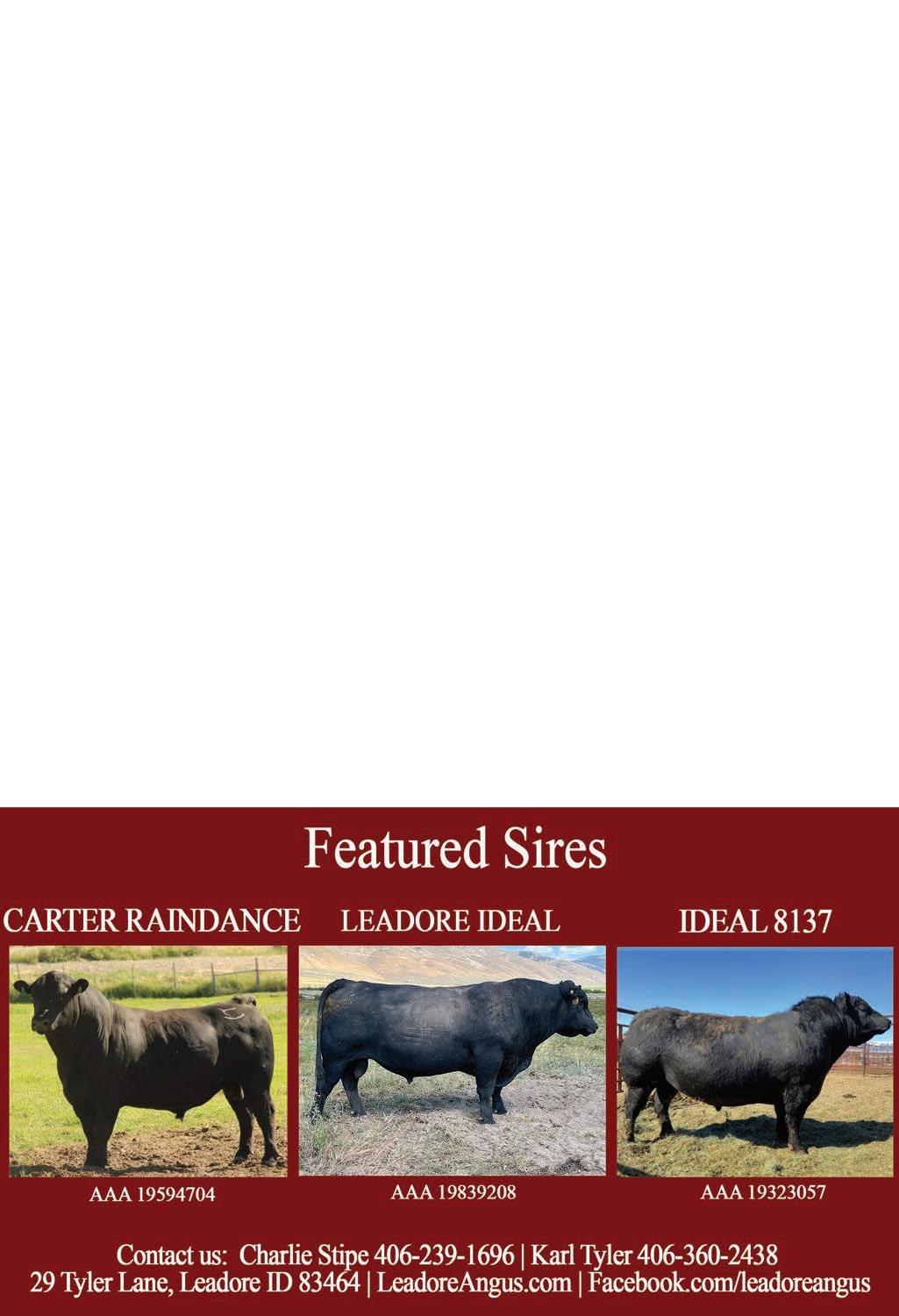

In 1986 when I was working at Oregon State University as Extension Information Specialist and managing the commodity market news program, I met Doc Hatfield. Doc and his wife Connie owned and operated the Hatfield High Desert Ranch near Brothers in the Central Oregon High Desert. That year, 1986, Doc and Connie founded a cooperative of ranchers and created Oregon Country Beef, now known as Country Natural Beef. Doc and Connie and I became very good friends over the years as we spent many hours at the ranch visiting and talking about Oregon Country Beef and the costs of ranching and raising cows. Doc passed away in 2012, but he left a lasting impression on many ranchers in the Pacific Northwest.
The beef industry has seen a great deal of change since 1986 when Doc Hatfield and I first met, structurally and otherwise, but I think it is important to remember a rather simple statement that Doc always made. Perhaps, more times than I remember, Doc said, “the cows have to fit the ranch.” In other words, they have to be the best cows for that particular grazing resource to efficiently convert grass to beef at the “best” cost. Over the years, I have added to Doc’s statement – and, “their calves have to fit the market.” Fitting the ranch may not be a requirement of a pasture operation in the Midwest, but I firmly believe those two statements are the basic premise of successful ranching in the Western U.S.
After two years of what may be decisive herd liquidation driven by drought and economics, the momentum is building as the beef industry heads into 2023 in anticipation of solid returns to the cow-calf sector. Certainly, from the standpoint of supply, it isn’t difficult to anticipate a stronger market. However, it is still important to remember that the scope of that market strength cannot only encompass live cattle prices, but rather must extend across the entire supply chain to the point of final demand – the consumer, both in the U.S. and key export markets. While the current situation and subsequent outlook is perhaps as positive as it has ever been, it is still important to remember how easily conditions affecting that demand can change and in turn, lead to market volatility. Consequently, I think it is timely for ranchers
BY JOHN NALIVKAto truly think about how the next 2-3 years may present an opportunity to realign their business.
I have always thought budgeting and financial analysis on the ranch are critical. It’s difficult to truly understand which decisions will have the greatest impact on the financial health of the ranch without first dissecting your financial situation. And, that requires numbers. You may have heard that from your banker when you were discussing your operating loan, but making the decision to take a complete look at costs of production on your ranch goes well beyond that visit with the banker. This is the starting point to understanding how those costs relate to your cowherd, your grazing resource, and changes in your marketing plan and making decisions to match all of the above with your operating costs. Your ranch is unique and your financial decisions rest on information that is unique to you and that ranch.
Ranching is a lifestyle, but beyond that it has to be financially sustainable. And that sustainability starts with “cows that fit the ranch” and “those cow’s calves fitting the market.” This is about successful ranch economics not carbon credits. It is no mystery that the financial viability of ranching is increasingly difficult if not impossible for many. We can all list several reasons for this, but as a result for whatever reason, at the end of the day understanding the economics of your ranch has become crucial. And at the same time, finding marketing opportunities to increase your revenue without increasing costs of production is also crucial and those opportunities are expanding with branded beef programs. I often hear about how those programs “increased my costs and I didn’t gain anything.” I totally understand that statement. My response - this is why knowing your ranch costs in order to assess how a branded program or any marketing program will impact your ranch financial situation before you make any decisions is so important.
We know the sharply reduced cattle numbers going forward over the next 2- 3 years will potentially create the opportunity for significantly higher revenue to cow-calf ranches. However, there are many factors at play that can impact that opportunity – negatively or positively. Managing that risk requires information.
Every situation is different as to how often you need to upgrade your QuickBooks program. Usually, this time of year it hits you front and center as you are finishing up last year’s financials and gearing up to start 2023. I have clients that have QuickBooks Desktop that is 2015 version and then I have some that are transitioned over to QuickBooks Online. Either way you need to know what your options are with the program as QuickBooks has been incorporating lots of product changes over the past year.
QuickBooks Company, as a whole, doesn’t understand that many of us live in rural areas where the internet is less than stellar and is one of the huge barriers to switching to QuickBooks Online. This, along with the cheaper cost, has always made QuickBooks Desktop more attractive to some in our industry. Recently QuickBooks made some changes to how their Desktop program is priced. Beginning in 2022 QuickBooks Desktop became an annual subscription similar to how QuickBooks Online is set up. If you are preparing your own payroll in Desktop then you know that QuickBooks Desktop only supports the payroll feature for the most 3 recent years and then you must upgrade to be able to use the payroll feature. Currently QuickBooks Desktop Pro 2023 is $543 annually which comes out to $45.75 per month. To give you a comparison, QuickBooks Online Essentials costs $55 per month. Neither of these figures include payroll subscription. QuickBooks Desktop is still a great option if you do not have strong and consistent internet
Many people have been contemplating or dreading changing to QuickBooks Online. In my conversations the main hold up has historically been the pricing as you could purchase QuickBooks Desktop one time and stretch the cost over multiple years. However, with changing Qui ckBooks Desktop to an annual subscription that removes part of the reason for not changing Personally, I like both programs for various reasons. QuickBooks Online is a great solution for operations that are transitioning to the next generation and need to get them more involved, but still want easy access for the older generation. QuickBooks Online can be accessed from any computer since you log on to it through a web browser and don’t download any programs onto your hard drive. Operations that want multiple members to be able to use the program from different locations, either for transitioning or because ranch locations are stretched far apart, this can be very helpful. QuickBooks Online also does a better job of using the bank feed function which can be handy in cutting down workload and keeping your books accurate to what transactions have cleared the bank in a timelier manner than just when you receive bank statements at month end Your accountant at the end of the year can also be invited to access your books without having to buy an additional user license so you no longer have to take a backup or accountants file to their office.
The time to make the choice between the two programs is this time of year when you tend to be in a position to need to renew or upgrade your program. There is no one right answer and changing from what you’re used to is not always a fun experience I realize, but sometimes a necessity nonetheless.











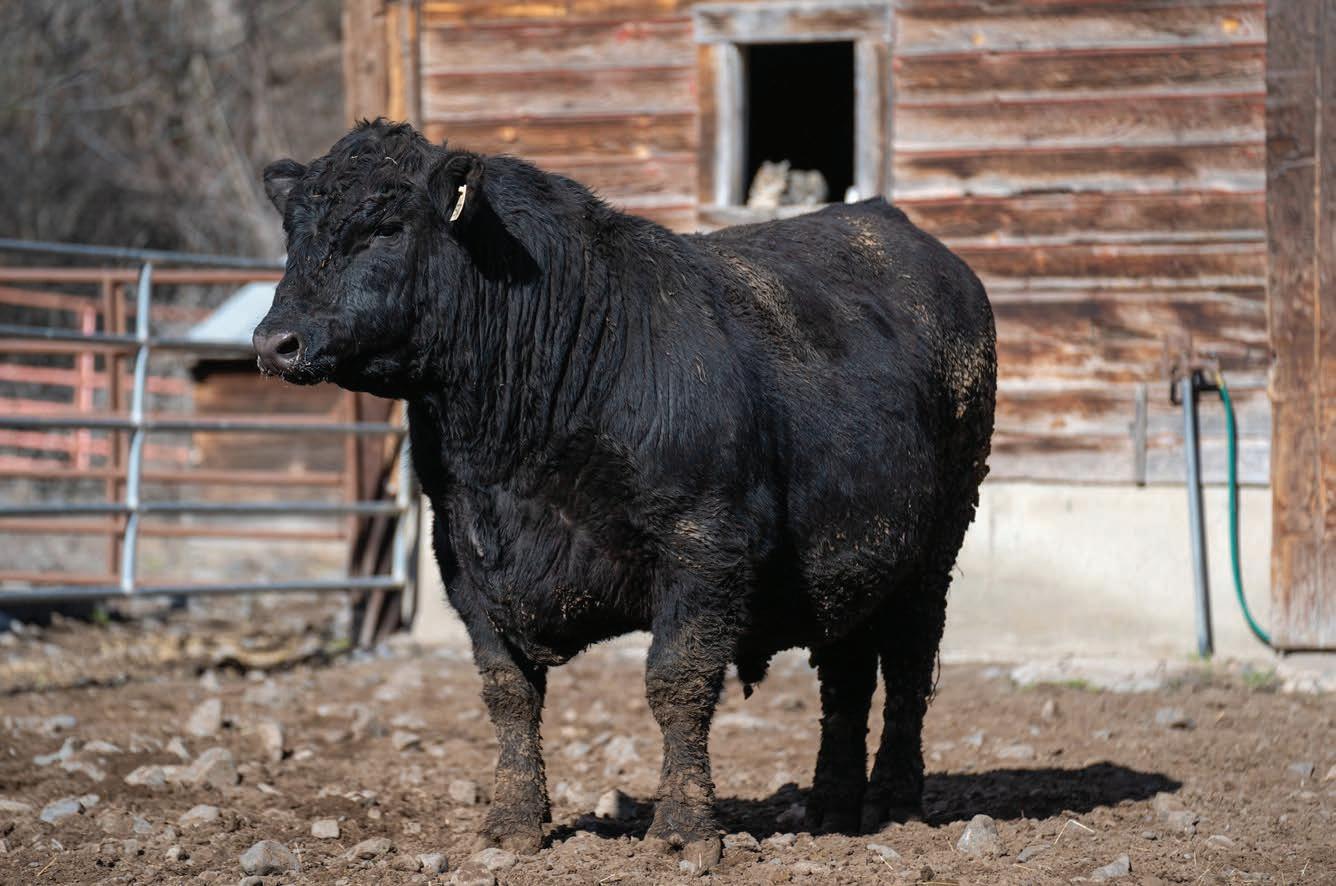






“Your

126.22 +/‐ACRES–Canyon Rim Development Ground Twin Falls‐ $5,500,000

892.86 +/‐ ACRES – Farm/Ca�le Opera�on Weiser‐ $1,427,000
3.91 +/‐ Acres‐Industrial Grain Mill – With Railroad Spur Twin Falls‐ $1,650,000
86.16 +/‐ Acres– 1022 CAFO/Feedlot
Buhl‐ $2,550,000 *NEW LISTING*
2.38 +/‐ Acres– Mul� Use Agriculture Facility
Kimberly‐ $2,500,000 *NEW LISTING*
We
AO/KC Cattle Company
B J Family Cattle
Bar 4M Ranch, Inc.
Barb Skogsberg
Beau & Chelsey
Lundgren
Big Creek Cowhouse LLC
BnB Farms, Inc
Burgess Angus Ranch
Camas Prairie Angus
Ranch
Carlson Co.
CKP Insurance, LLC
Commercial Tire Store
D & L Ranch
Diamond S Ranch Corp
Dryden Ranch
Eldredge Land & Livestock
Ellsworth Angus Ranch
Eyebrow Ag Asso.
Ford Ranch Inc.
Greenway Seed Co
Harris Cattle Co LLC
Haw Creek Ranch
Heart K Ranch
Helmick Ranch
Idaho Farm Bureau Federation
J Lazy S Angus Ranch
Jace Mink
Jarret Mink
Jim DeVries
Johnson Ranch
Joyce Livestock Company
Ken Wood, LLC / C Bench Livestock
Kirk & Stevia Webb
Little Land & Livestock Co.
Mountain Springs Ranch, LLC
Neil Uptmor Farms
Owyhee County
Extension
Pacific Intermountain Mortgage Co.
Pendleton Custom Farming, LLC
Percy Ranch
Pitchstone Waters Land & Cattle
Potter’s Emmet Valley Ranch
Pratt Livestock
Predator Control
Rand & Rosemary
Dixon
Randall & Susan Crisp
Rimrock Angus

Roser Angus & Simmental
Schroeder Law
Seth Pratt
Seven High Ranch, Inc.
Shawn Mock
Sliman 3 M Cattle
Sonora Zaugg
Soulen Livestock
Company
Spring Creek Ranch
SRS Cattle
SS Cattle Company LLP
Steven Miller
Synergy Resource Solutions, Inc.
Teton Mountain Ranch
The Nichols Accounting Group
Tim Shaw Herefords, Inc.
Todd & Shirley Wilson
Toone Land & LIvestock Inc.
Virgil Tucker
Wagner Transportation Whitnah Ranches
Winecup L Cattle Co
Wood V-X Red Angus
Zion McKay

KODY DEE WILLIAMS
Northwest Regional Manager
Cell: 509.948.6430
Office: 800.989.8247
Email: kodydeewilliams@allflexusa.com
P.O. Box 612266 • 2805 East 14th Street Dallas/Ft. Worth Airport, Texas 75261-2266


Dennis Boehlke
AMERICA’S LIVESTOCK MARKETING LEADERWORKING FOR YOU. 2700 Airport Way, Boise, ID, 83705 855-868-6842
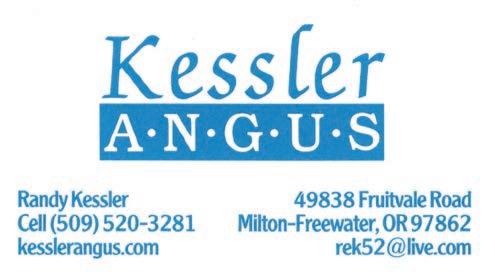
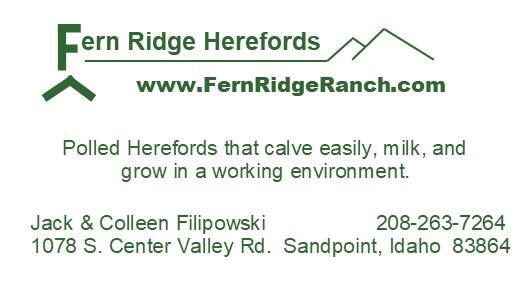

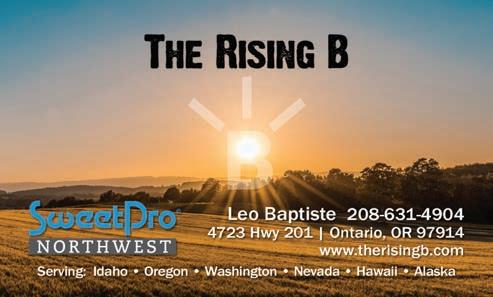

PRIVATE TREATY SALES HEREFORD & RED ANGUS


2 Year Olds & Spring Yearling Bulls Spring Yearling Hereford & Red Baldy Heifers James &
Check out our offering at jbbalherefords.com
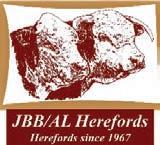
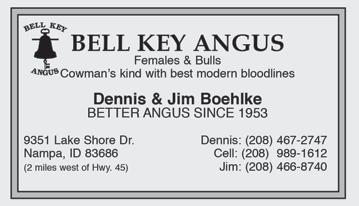
JBB/AL HEREFORDS 1973 S 1500 E GOODING, ID 83330 jbbalherefords@gmail.com
Bryan & Charly Anderson 208-280-1964 Jae Anderson



A four-year-old Bar T Bar cow that is weaning her third calf with a 365 day calving interval and a near perfect udder. Her Zoetis Fertility EPD ranks her predicted lifetime calf production in the Top 1% of the industry. She epitomizes what it means to be a better cow!
It’s no wonder, that despite two of the worst drought years in Arizona history, Bar T Bar is the Number 1 breeder of Dams of Merit and Distinction in the Gelbvieh breed. Bar T Bar cows run under real world conditions. Bar T Bar bulls produce highly fertile, efficientsized cows that breed up and wean a high percentage of their own body weight. The March bull calf pictured weaned off his four-yearold dam at 639 pounds at 200 days of age.
Selected to improve cowherd profit with our unique $Ranch index –under real world conditions. The 2022 Bar T Bar bulls rank in the Top 17% of the industry or $Ranch and the top 19% for Fertility.


Selected for bigger growth and milk numbers under artificial seedstock conditions that result in cows that do not fit the environment.
Selected to balance the maternal requirements while building heavier calves with higher marbling. The 2022 Bar T Bar bulls rank in the top 5% of the industry for $Profit.
Industry average bulls are around $8,000 on $Profit. This is $90 per calf behind the average Bar T Bar 2022 bull. Average bulls lack maternal traits, feed efficiency, and high carcass quality.
Bar T Bar has been measuring and selecting for reduced feed intake for a decade -- to help you lower your feed costs!
Most of the industry does not even measure this trait. The result is selection for inefficient cattle that eat too much!

